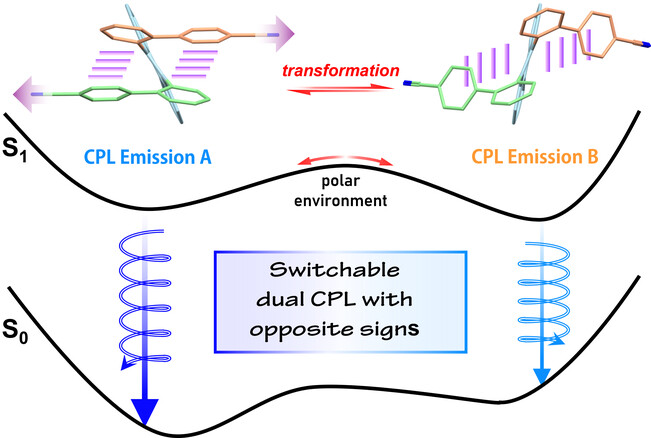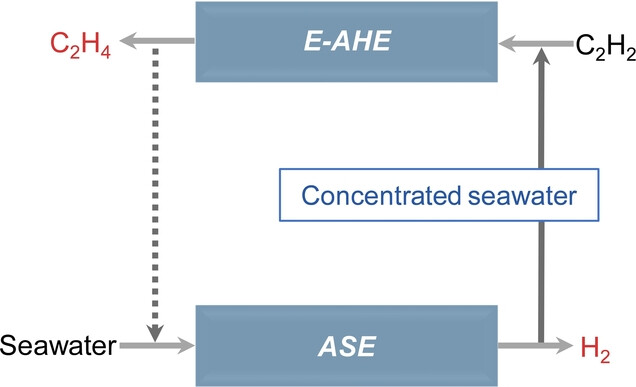Journal list menu
Export Citations
Download PDFs
Cover
Cover Picture: A Bioorthogonal Dual Fluorogenic Probe for the Live-Cell Monitoring of Nutrient Uptake by Mammalian Cells (Angew. Chem. Int. Ed. 32/2024)
- First Published: 11 July 2024
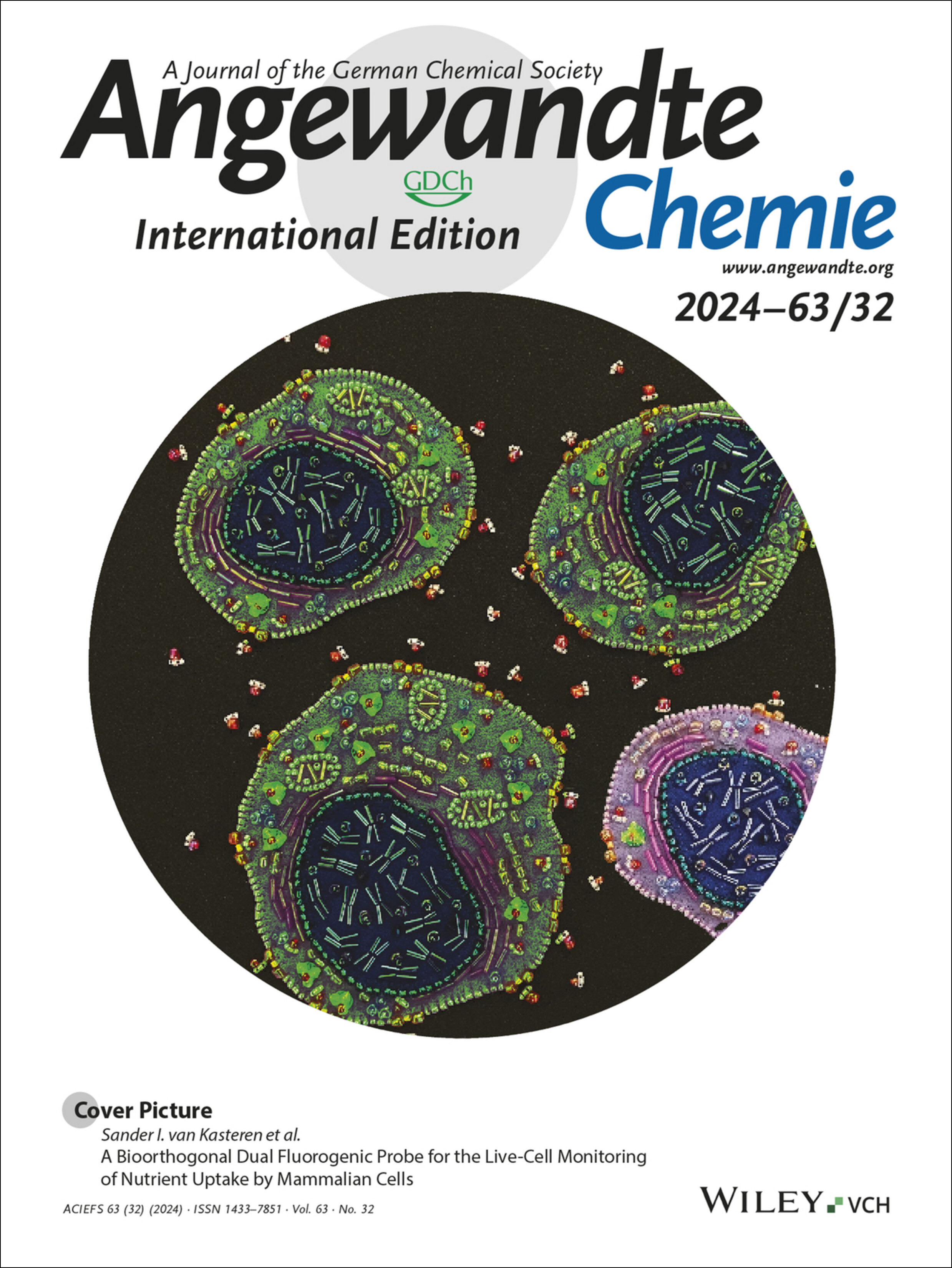
Monitoring nutrient uptake in cells has been very difficult to date due to fluorophore artefacts. In their Research Article (e202401733), Sander I. van Kasteren et al. report a new way of monitoring nutrient uptake. They developed a CFSE-based dual-quenched probe that becomes fluorogenic in the cytosol, and fluorescent when it reacts with incumbent nutrients labelled with click-reactive nutrients. The cover image was made by Dr. Kim Wals of KW Science Art using glass beads, embroidery silks and felt, with each individually knotted bead representative of a cellular component or molecular mechanism from the highlighted paper.
Inside Cover: Modulating the Electrolyte Microenvironment in Electrical Double Layer for Boosting Electrocatalytic Nitrate Reduction to Ammonia (Angew. Chem. Int. Ed. 32/2024)
- First Published: 08 July 2024
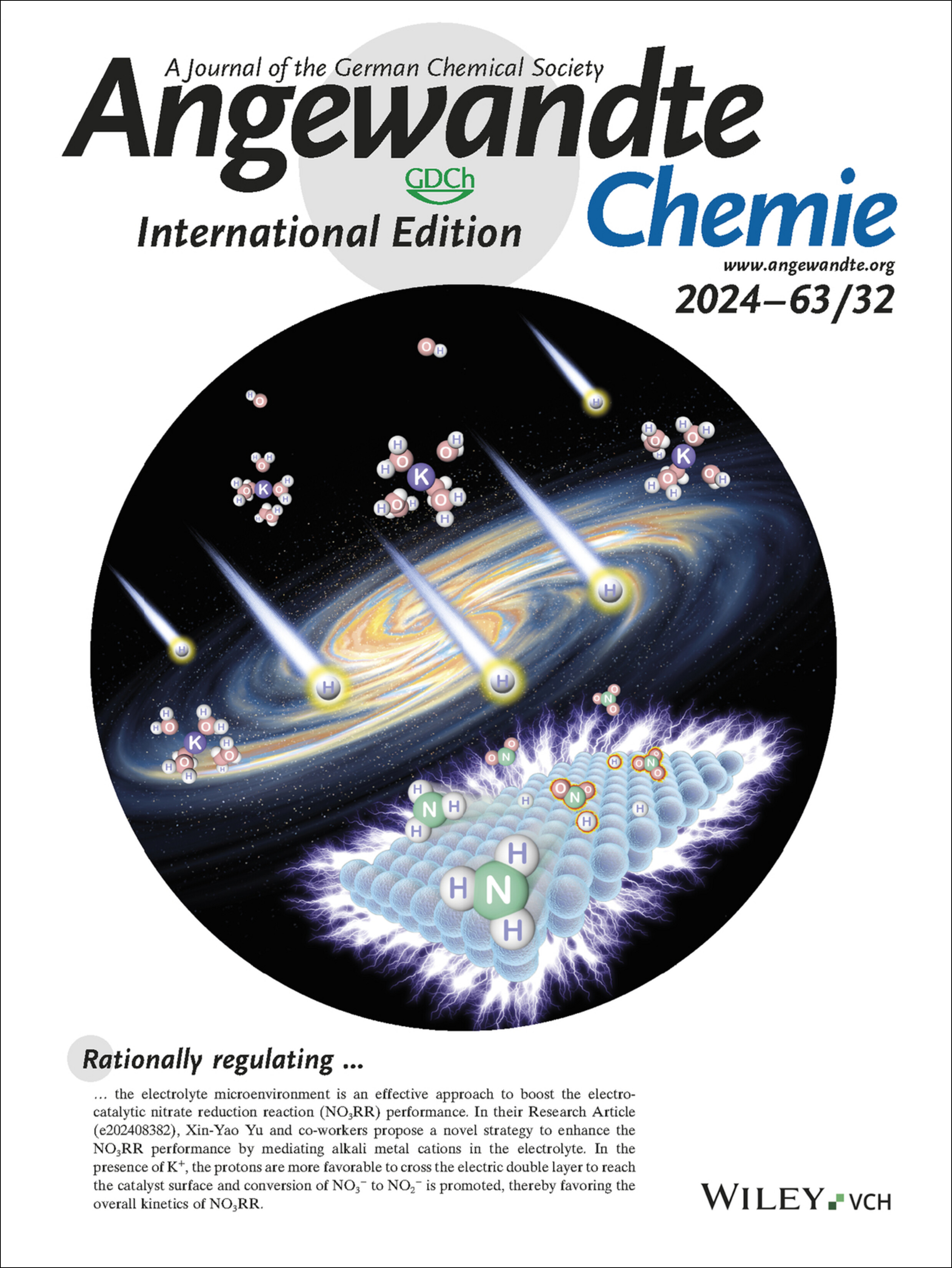
Rationally regulating the electrolyte microenvironment is an effective approach to boost the electrocatalytic nitrate reduction reaction (NO3RR) performance. In their Research Article (e202408382), Xin-Yao Yu and co-workers propose a novel strategy to enhance the NO3RR performance by mediating alkali metal cations in the electrolyte. In the presence of K+, the protons are more favorable to cross the electric double layer to reach the catalyst surface and conversion of NO3− to NO2− is promoted, thereby favoring the overall kinetics of NO3RR.
Inside Back Cover: Neighbouring Synergy in High-Density Single Ir Atoms on CoGaOOH for Efficient Alkaline Electrocatalytic Oxygen Evolution (Angew. Chem. Int. Ed. 32/2024)
- First Published: 11 July 2024
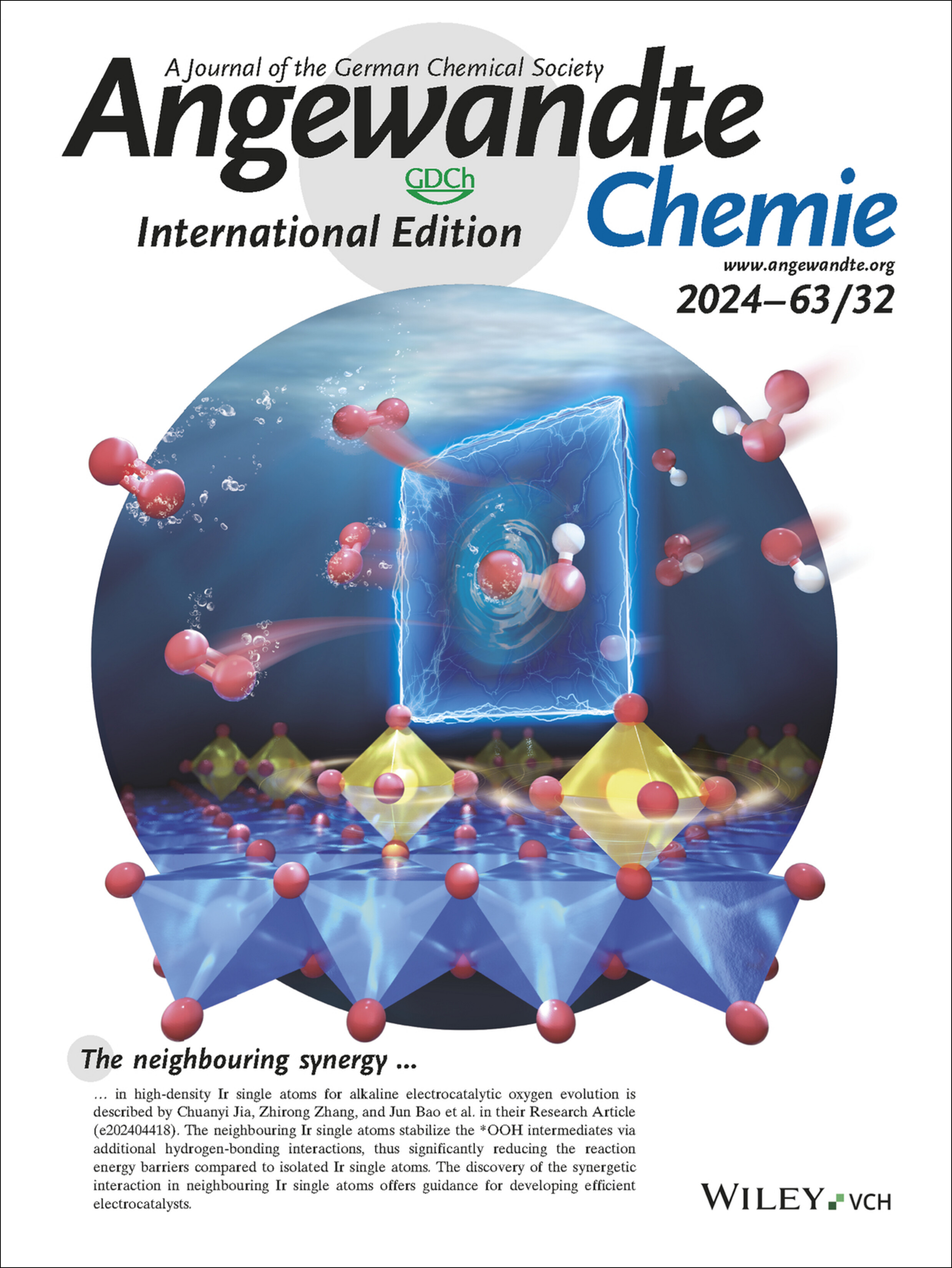
The neighbouring synergy in high-density Ir single atoms for alkaline electrocatalytic oxygen evolution is described by Chuanyi Jia, Zhirong Zhang, and Jun Bao et al. in their Research Article (e202404418). The neighbouring Ir single atoms stabilize the *OOH intermediates via additional hydrogen-bonding interactions, thus significantly reducing the reaction energy barriers compared to isolated Ir single atoms. The discovery of the synergetic interaction in neighbouring Ir single atoms offers guidance for developing efficient electrocatalysts.
Back Cover: A Dual-Bond Crosslinking Strategy Enabling Resilient and Recyclable Electrolyte Elastomers for Solid-State Lithium Metal Batteries (Angew. Chem. Int. Ed. 32/2024)
- First Published: 03 July 2024
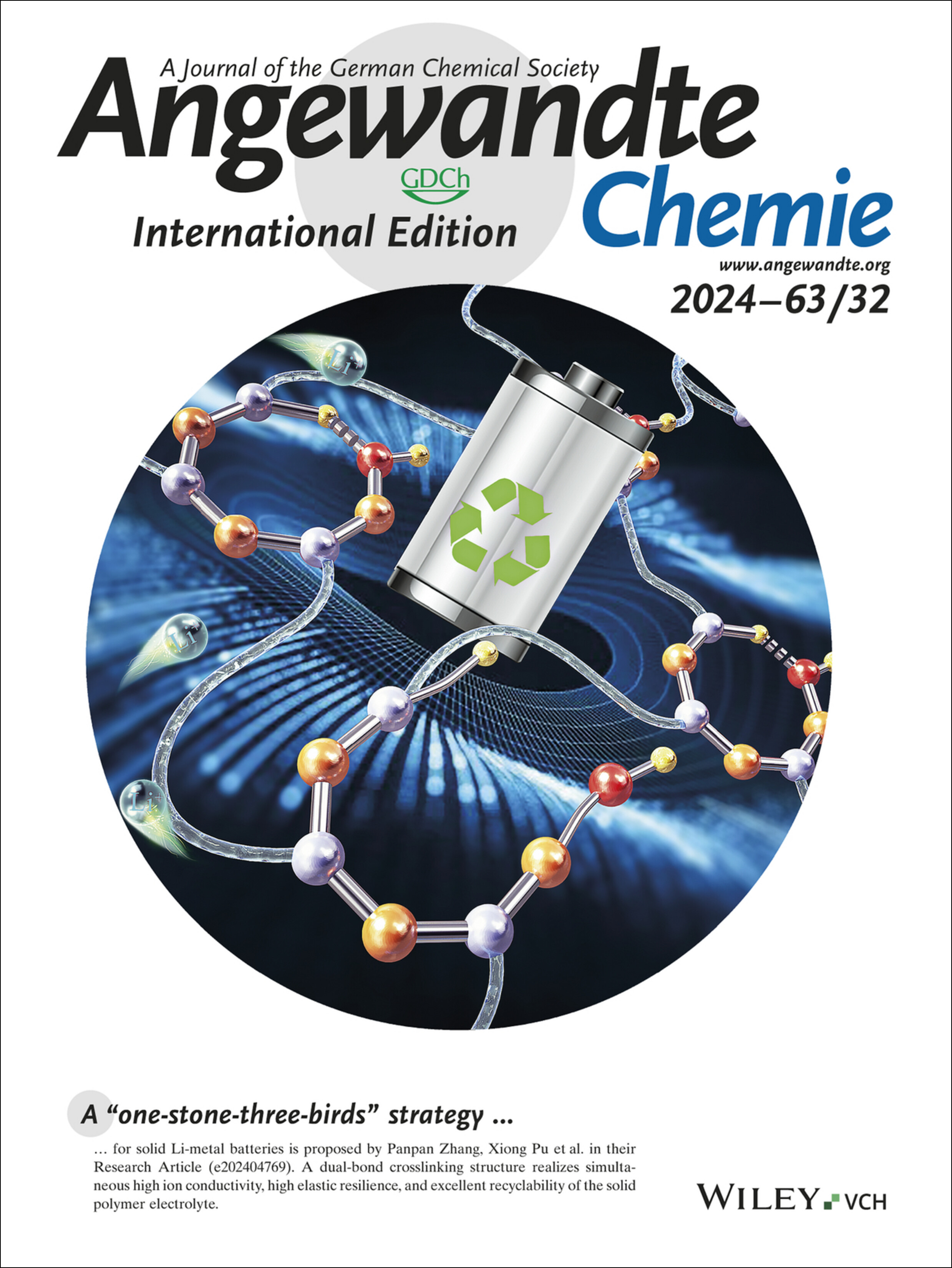
A “one-stone-three-birds” strategy for solid Li-metal batteries is proposed by Panpan Zhang, Xiong Pu et al. in their Research Article (e202404769). A dual-bond crosslinking structure realizes simultaneous high ion conductivity, high elastic resilience, and excellent recyclability of the solid polymer electrolyte.
Graphical Abstract
Introducing …
Samira Siahrostami
- First Published: 04 July 2024

“The most important future applications of my research include revolutionizing hydrogen peroxide production processes across various industries by providing cost-effective and sustainable methods… If I were not a scientist, I might have pursued a career in education, advocacy, or a creative field like writing or painting, where I could share knowledge, inspire others, and make a positive impact…” Find out more about Samira Siahrostami in her Introducing… Profile.
Charalampos (Babis) Pappas
- First Published: 09 July 2024

“If I could be granted a superpower, it would be the ability to fluently speak and understand every language (especially German) in the world because it would allow me to connect with people from all cultures and backgrounds … My group has fun by challenging each other in basketball matches, fostering friendly competition and team spirit both in and out of the lab …” Find out more about Babis Pappas in his Introducing… Profile.
Highlight
2D Materials
Ultrastrong Graphene Sheets Assembled with Nanoconfined Water
- First Published: 03 May 2024

Wet chemical strategies make it difficult to suppress capillary contraction and achieve orderly assembly of isotropic sheets. Cheng, Baughman, and co-workers have now used a nanoconfined water-induced alignment strategy to avoid capillary contraction, and obtained ultrastrong isotropic graphene sheets with a tensile strength of 1.87 GPa and porosity of 3.87 %.
Minireview
Interfaces
Building Functional Liquid-Based Interfaces: From Mechanism to Application
- First Published: 24 May 2024
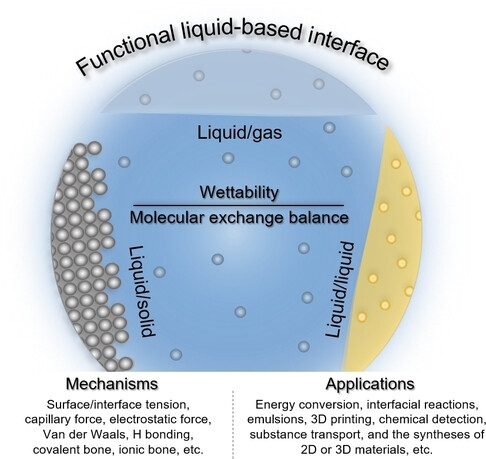
This Minireview explores functional liquid-based interfaces, which are notable for using the distinctive properties of liquids in various applications. It focuses on examining the structural dynamics and customizable properties of these interfaces. Additionally, the review discusses the interactions of molecular forces, design methodologies, and key application areas that warrant further attention. The ultimate aim is to advance the development of innovative systems using liquid-based interfaces.
Review
Photochemistry
From Plastic Waste to Green Hydrogen and Valuable Chemicals Using Sunlight and Water
- First Published: 16 May 2024
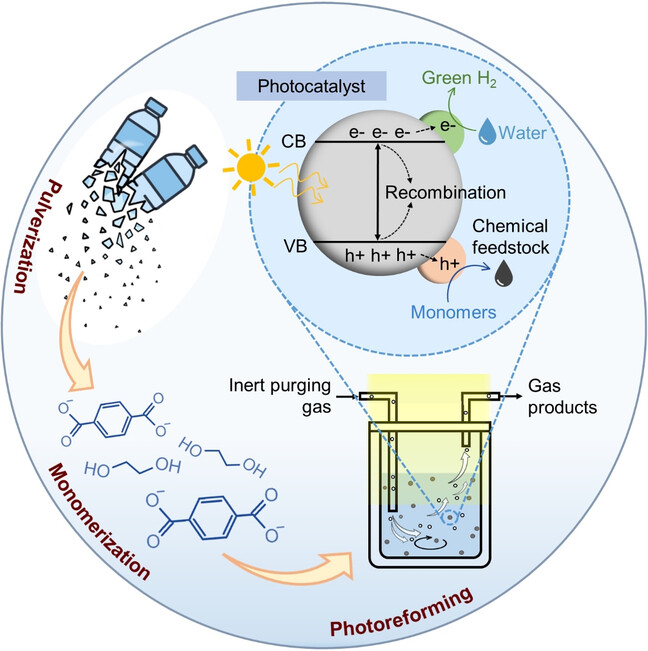
The experimental procedure generally involves two distinct processes: (1) pre-treatment of original plastics; and (2) photoreforming of these treated molecules. The initial stage is essential for the breakdown of long carbon chains into smaller components via pulverization and monomerization, while the subsequent stage focuses on transforming these components into economically valuable products through photoreforming. Plastic photoreforming employs a photocatalyst, typically a semiconductor, that absorbs sunlight and initiating chemical reactions. This approach has the capacity to convert plastic waste into high-value chemicals and generate hydrogen (H2) through water splitting under ambient conditions.
Research Article
Asymmetric Synthesis
[2.2]Benzoindenophane-Based Chiral Indenyl Ligands: Design, Synthesis, and Applications in Asymmetric C−H Activation
- First Published: 23 May 2024
![[2.2]Benzoindenophane-Based Chiral Indenyl Ligands: Design, Synthesis, and Applications in Asymmetric C−H Activation](/cms/asset/08c49c09-71d2-4666-a03a-c19654284bb4/anie202400279-toc-0001-m.jpg)
Both the development of optically pure chiral indenyl rhodium(IndxRh) catalysts and IndxRh-catalyzed asymmetric C−H activation are challenging and seldom reported. Herein, a class of chiral indenyl ligands bearing a [2.2]benzoindenophane skeleton is presented. It is convenient to synthesize and easy to modify (13 variations are shown). Importantly, its coordination to rhodium is face-specific. Moreover, the utilities of its IndxRh catalysts have been demonstrated by two asymmetric C−H activation reactions.
Bioorthogonal Chemistry
A Bioorthogonal Dual Fluorogenic Probe for the Live-Cell Monitoring of Nutrient Uptake by Mammalian Cells
- First Published: 08 May 2024
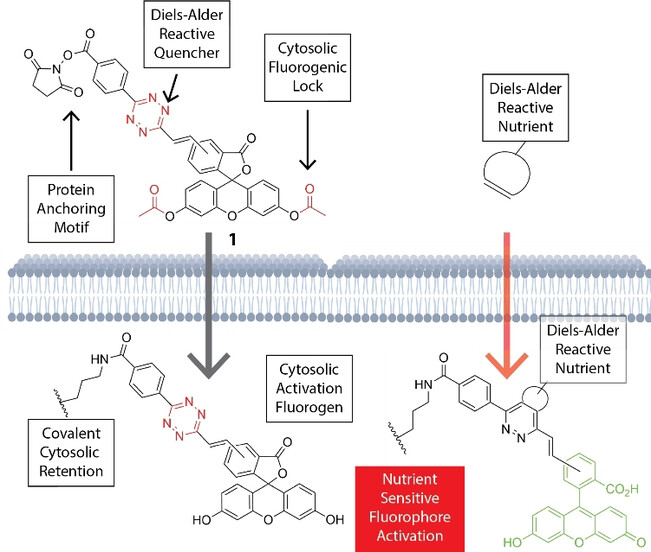
Wang, Torres et al. describe a probe for the live cell monitoring of nutrient uptake by Inverse Electron-Demand Diels–Alder reaction. By dually quenching a CFSE-probe that becomes fluorogenic after treatment with cytosolic esterases, and fluorescent upon reaction with strained alkenes, they could monitor uptake of fatty acids, sugars, and amino acids in primary immune cells.
Polymers
Aqueous Developable and CO2-Sourced Chemical Amplification Photoresist with High Performance
- First Published: 05 May 2024

In this work, a set of CO2-sourced polycarbonates containing acid-labile cyclic acetal structures were explored as chemical amplification photoresist in deep ultraviolet lithography, and these materials exhibit a superior lithography performance than commercial KrF and ArF resists, demonstrating a promising application prospect in integrated circuit manufacture.
Analytical Chemistry
Surface-Based Multimeric Aptamer Generation and Bio-Functionalization for Electrochemical Biosensing Applications
- First Published: 19 May 2024
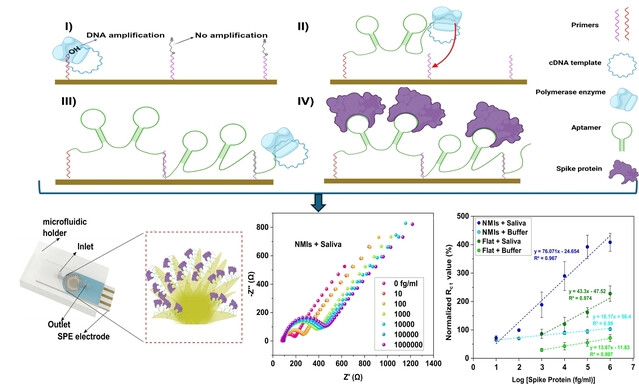
A novel surface-based room temperature rolling circle amplification (RCA) method for multimeric aptamer generation alongside relevant surface bio-functionalization were employed on nano-/microislands (NMIs) working electrodes (WEs) for developing highly sensitive and selective NMIs multimeric aptasensors.
Heterogeneous Catalysis
Efficient Neutral H2O2 Electrosynthesis from Favorable Reaction Microenvironments via Porous Carbon Carrier Engineering
- First Published: 19 May 2024

The mesoporous carbon sphere carriers were optimized to enhance O2 enrichment and localized pH elevation, establishing a favorable microenvironment for 2e− ORR in neutral media to generate H2O2 with an exceptional production rate of 15.77 mol gcatalyst−1 h−1, yielding a neutral H2O2 solution suitable for medical disinfection.
Photocatalysis | Hot Paper
A General Iron-Catalyzed Decarboxylative Oxygenation of Aliphatic Carboxylic Acids
- First Published: 12 May 2024

We developed a general iron-catalyzed decarboxylative oxygenation strategy that occurs under extraordinarily mild conditions, displays high functional group tolerance, and has a broad substrate scope. We conducted a detailed mechanistic study of the transformation, underpinning the further development of iron-photocatalyzed decarboxylative methodologies.
Chiral Polymers | Hot Paper
Size Control of Chiral Nanospheres Obtained via Nanoprecipitation of Helical Poly(phenylacetylene)s in the Absence of Surfactants
- First Published: 14 May 2024
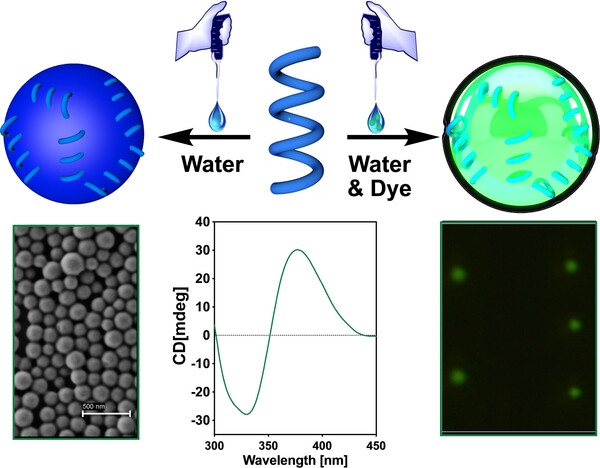
Stable chiral nanospheres with controlled size and density can be obtained from nanoprecipitation of helical poly(phenylacetylenes). These polymer nanoparticles are stable in water in the absence of surfactants and have the ability of encapsulating metal nanoparticles or fluorescent dyes which can be further released by light irradiation.
Photoelectrochemistry | Hot Paper
Unlocking Single Particle Anisotropy in Real-Time for Photoelectrochemistry Processes at the Nanoscale
- First Published: 23 May 2024
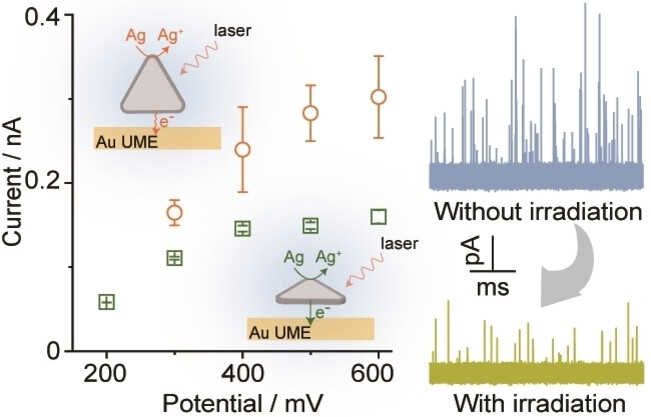
Real-time tracking and investigation of single particle anisotropy in the dynamic photochemistry processes at the nanoscale via collision electrochemistry is performed. This high-throughput material screening methodology offers insights into the impact of morphological anisotropy on interfacial mass transfer and electron transfer kinetics in plasmonic-assisted electrochemistry.
Electrocatalytic O2 Evolution
Neighbouring Synergy in High-Density Single Ir Atoms on CoGaOOH for Efficient Alkaline Electrocatalytic Oxygen Evolution
- First Published: 04 April 2024
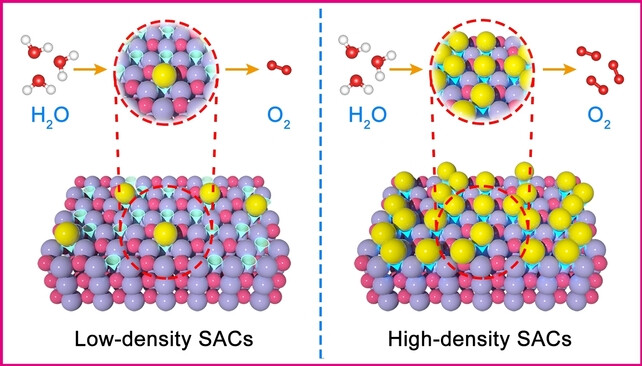
The catalytic performance of single-atom catalysts was strictly limited by isolated single-atom sites. Fabricating high-density single atoms to realize the synergetic interaction in neighbouring single atoms exhibited great potential to break performance limitations. Herein, we revealed that the synergetic interaction in neighbouring Ir single atoms contributes to enhanced performance for oxygen evolution relative to isolated Ir single atoms.
Titanium
Divalent Titanium via Reductive N−C Coupling of a TiIV Nitrido with π-Acids
- First Published: 15 April 2024
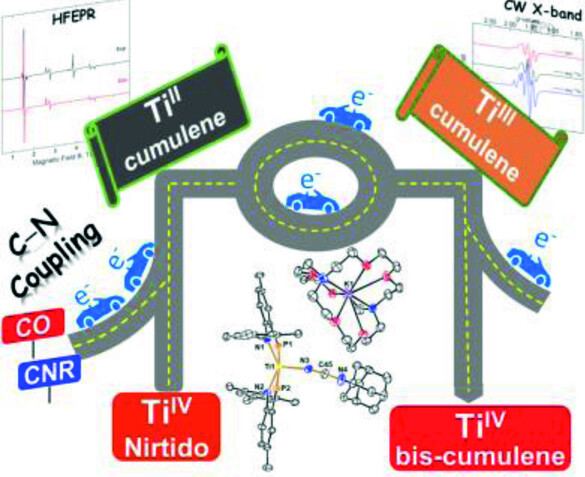
A titanium nitride undergoes N−C bond coupling with carbon monoxide and isocyanides to form TiII cumulene complexes [(PN)2Ti(NCE)]− (E=O, NAd, NtBu). Oxidation of these affords the TiIII cumulene [(PN)2Ti(NCE)]. Further oxidation affords a TiIV bis-cumulene trans-[(PN)2Ti(NCNAd)2]. Structural, electrochemical, and spectroscopic studies (HFEPR, CW X-band, NMR and IR spectroscopies), including 15N isotopic labelling studies are presented and discussed to understand the bonding and topology.
Polymer Chemistry | Very Important Paper
Synthesis of Photoresponsive Fast Self-healing Polyolefin Composites by Nickel-Catalyzed Copolymerization of Ethylene and Lignin Cluster Monomers
- First Published: 20 May 2024
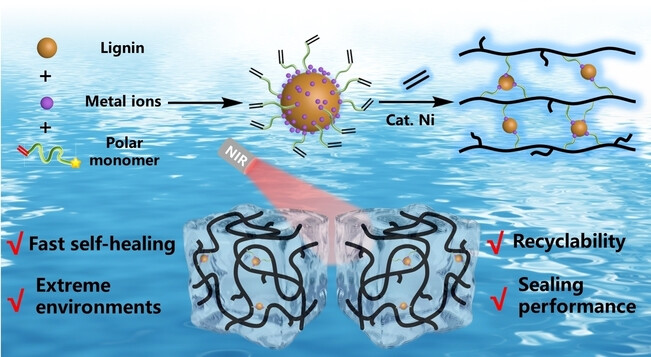
The lignin cluster polymerization strategy (LCPS) prevents the poisoning of the α-diimine nickel catalyst by polarmonomers or polar groups of lignin, and achieves efficient synthesis of polyolefin composites. This strategy enabled even dispersion of lignin, enhancing photothermal conversion and interfacial heat transfer between lignin and polymers, thereby accelerating self-healing speed.
Small-Molecule Inhibitors | Hot Paper
The Pseudo-Natural Product Tafbromin Selectively Targets the TAF1 Bromodomain 2
- First Published: 27 May 2024
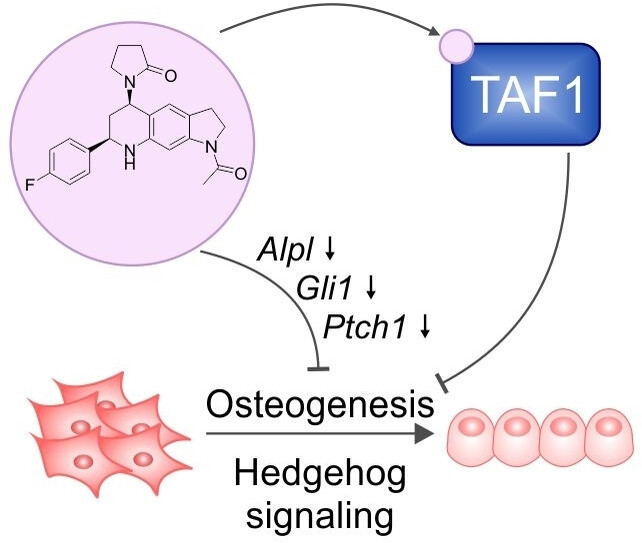
The pyrrolo[3,4-g]quinolone pseudo-natural product Tafbromin was identified as an inhibitor of Hedgehog signaling-induced osteogenesis. Tafbromin binds to the second bromodomain of the TATA-box binding protein-associated factor 1 (TAF1) with high selectivity over other bromodomains and suppresses the expression of Hedgehog target genes and alkaline phosphatase.
Lithium Metal Batteries
A Dual-Bond Crosslinking Strategy Enabling Resilient and Recyclable Electrolyte Elastomers for Solid-State Lithium Metal Batteries
- First Published: 23 May 2024

A dual-bond crosslinking strategy is proposed for solid polymer electrolytes to decouple their trade-off relationships among mechanical, recyclable and conductive properties. The elastically resilient, chemically recyclable and highly conductive solid polymer electrolyte enables 4.3 V-class and room-temperature Li metal batteries with stable cyclability, high rate-capability and recyclability.
Single-atom Electrocatalysts
Creating High-entropy Single Atoms on Transition Disulfides through Substrate-induced Redox Dynamics for Efficient Electrocatalytic Hydrogen Evolution
- First Published: 15 May 2024
Unsymmetrical Diborenes
Aromatic 1,4,2,3-Diazadiborole Featuring an Unsymmetrical B=B Entity: A Versatile Synthon for Unusual Boron Heterocycles
- First Published: 21 May 2024

This work unveils a 6π-aromatic 1,4,2,3-diazadiborole, a BN analogue of cyclopentadienide. Featuring an unsymmetrical B=B entity, this species readily undergoes redox, insertion, addition, and cycloaddition reactions for the synthesis of unusual boron heterocycles. The ring retention, cleavage/recombination, annulation, and expansion have been witnessed during these transformations.
Biosynthesis
Phosphonoalamides Reveal the Biosynthetic Origin of Phosphonoalanine Natural Products and a Convergent Pathway for Their Diversification
- First Published: 23 May 2024

The Streptomyces phosphonoalamides result from the convergence of phosphonoalanine (PnAla) biosynthesis and peptide ligation pathways. The transamination of phosphonopyruvate (PnPy) to PnAla drives unfavorable C−P bond formation despite its reversibility, establishing this early branch of phosphonate biosynthesis, while the promiscuity of the dipeptide and tripeptide ligases result in a dramatic expansion of observed di- and tripeptide products.
Molecular Motors | Hot Paper
A Light-Powered Single-Stranded DNA Molecular Motor with Colour-Selective Single-Step Control
- First Published: 23 May 2024
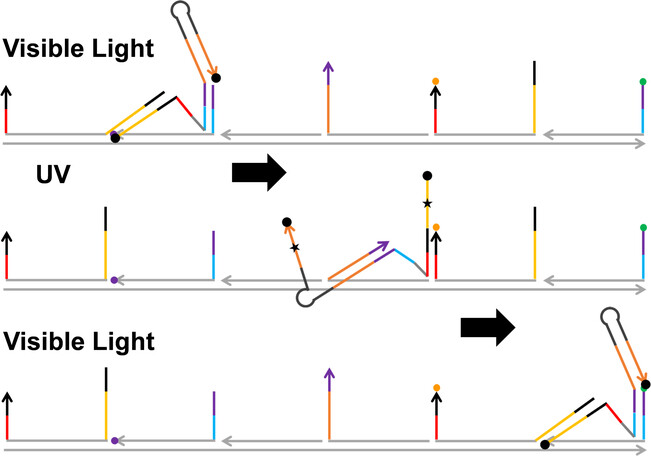
Molecular motors access small length scale and have potential for precision technology. But the top-down control of these motors is a challenge as they are molecular objects subject to stochastic fluctuations. Now a rationally designed single-stranded DNA molecular motor demonstrates a novel nano-optomechanical driving mechanism that pushes the top-down control of molecular motors down to every single step.
Photocatalysis
Photoinduced Copper-Catalyzed Asymmetric Three-Component Radical 1,2-Azidooxygenation of 1,3-Dienes
- First Published: 24 May 2024

An unprecedented photoinduced copper-catalyzed asymmetric three-component radical 1,2-azidooxygenation of 1,3-dienes with readily available azidobenziodazolone reagent and carboxylic acids is reported. This process is notable for using chiral copper-based complex as a bifunctional catalyst for photoinduced azidyl radical generation and C−O cross-coupling, providing access to diverse valuable azidated chiral allylic esters.
Photoredox Catalysis
Nickel-Catalyzed Highly Selective Radical C−C Coupling from Carboxylic Acids with Photoredox Catalysis
- First Published: 24 May 2024

A dual nickel/photoredox catalyzed selective radical-radical cross-coupling reaction has been developed with readily available carboxylic acids and their NHPI ester derivatives as coupling partners. This synergistic catalysis enables the mild and efficient building of C(sp2)−C(sp3) bonds or C(sp3)−C(sp3) bonds, affording structurally complex ketones and congested products with all-carbon quaternary centers.
Supramolecular Materials
Strong Metal Support-Interaction
Unraveling the Unique Strong Metal-Support Interaction in Titanium Dioxide Supported Platinum Clusters for the Hydrogen Evolution Reaction
- First Published: 21 May 2024

We achieve the first construction of strong metal-support interaction (SMSI) between Pt sub-nanometer clusters and amorphous TiO2 nanosheets. Unique SMSI behaviors – ordering process of Pt atoms within clusters and superior stability in oxygen at high temperatures – are unraveled. Further investigation suggests that the disappeared CO adsorption ability originates from the unique electronic interaction after forming SMSI.
Biocatalysts
Rational Design of the Spatial Effect in a Fe(II)/α-Ketoglutarate-Dependent Dioxygenase Reverses the Regioselectivity of C(sp3)−H Bond Hydroxylation in Aliphatic Amino Acids
- First Published: 24 May 2024
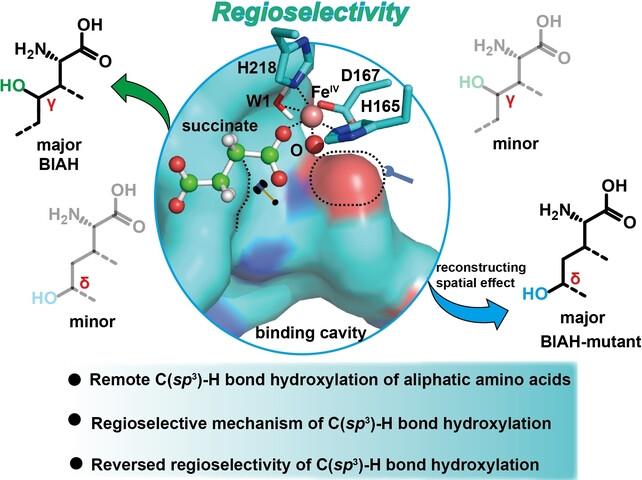
This study addressed the challenge of regioselectivity for remote C(sp3)−H bond hydroxylation. A Fe(II)/α-ketoglutarate-dependent dioxygenase (BlAH) was mined with a promiscuous hydroxylation for aliphatic amino acids. The regioselectivity of C(sp3)−H bond hydroxylation could be regulated by the spatial effect of BlAH. As a proof of concept, the spatial effect of BlAH was redesigned and reversed the regioselectivity from the γ to the δ site.
Aqueous Zn-Ion Batteries
Ultra-High Proportion of Grain Boundaries in Zinc Metal Anode Spontaneously Inhibiting Dendrites Growth
- First Published: 23 May 2024
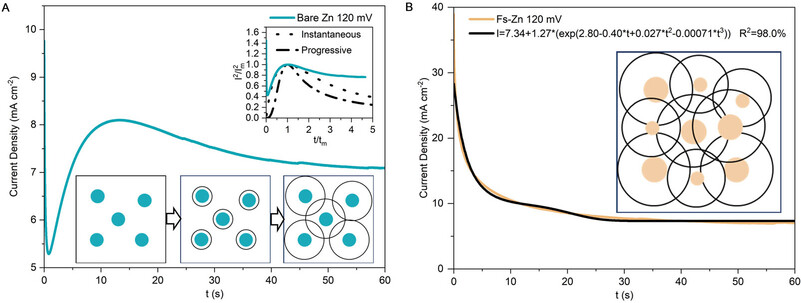
Ultra-high proportion of grain boundaries create abundant nucleation sites, accelerating zinc nucleation and growth rates allowing for the 2D growth kinetics. This offers advantages over the traditional 3D instantaneous nucleation mode of the commercial zinc foil, constrained by limited nucleation sites and kinetics associated with nucleation and growth.
Fluorescent Probes
Dual-Locked Fluorescent Probes Activated by Aminopeptidase N and the Tumor Redox Environment for High-Precision Imaging of Tumor Boundaries
- First Published: 23 May 2024
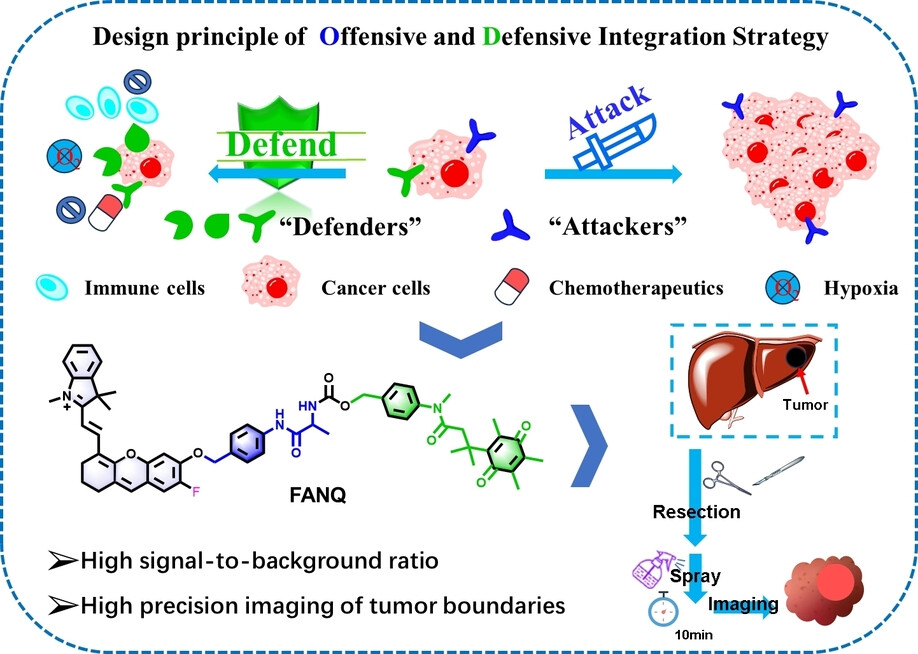
A series of offensive and defensive integration (ODI) strategy-based fluorescent probes depending on the “attack and defense systems” required for the persistence of tumors is reported. FANQ was screened for tumor imaging, distinguishing between cancerous tissue and adjacent tissue with an obvious tumor boundary.
Batteries | Very Important Paper
Approaching Sustainable Lithium-Ion Batteries through Voltage-Responsive Smart Prelithiation Separator with Surface-Engineered Sacrificial Lithium Agents
- First Published: 27 May 2024
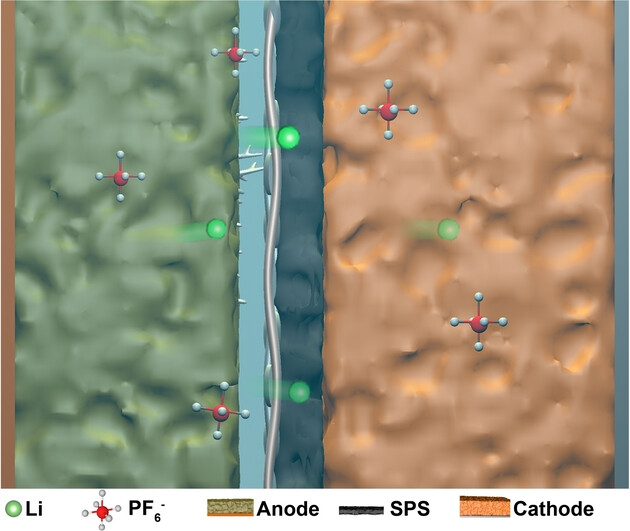
A smart lithium compensation strategy by introducing voltage-responsive prelithiation separator can staged release active lithium, regenerating spent lithium-ion batteries and extending their life. The separator's ability to absorb excess lithium below operating voltage protects the cathode from electrochemical failure or short circuit, enhancing safety and sustainability.
Organic Nanofiltration
Vapor/Vapor-Solid Interfacial Growth of Covalent Organic Framework Membranes on Alumina Hollow Fiber for Advanced Molecular Separation
- First Published: 24 May 2024
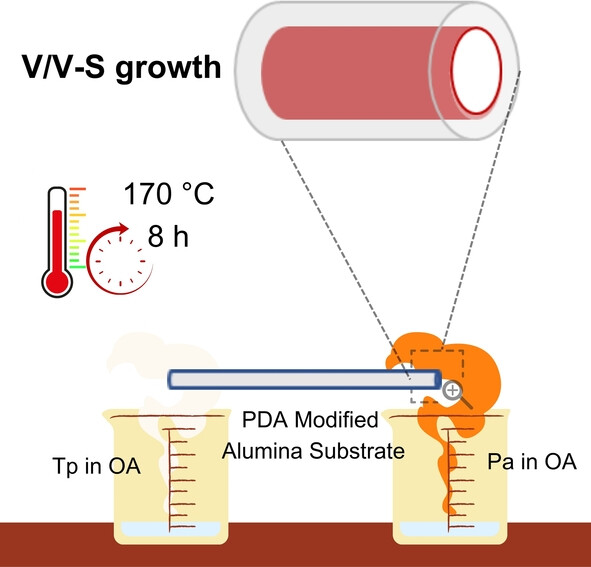
Through vapor/vapor-solid (V/V−S) interfacial method, in which vapor-phase monomers were introduced onto polydopamine(PDA)-modified alumina at 170 °C and 1 atm within 8 h, ultrathin crystalline TpPa-1 membranes were successfully grown on the inner lumen surface of alumina hollow fibers substrate. The resulting filtration module exhibits exceptional stability and performance in continuous inside-out cross-flow organic solvent nanofiltration.
Total Synthesis
Total Synthesis of Lissodendoric Acid A
- First Published: 02 May 2024

A synthetic strategy leading to the first total synthesis of lissodendoric acid A is reported. The 12-step synthesis centers on an enantiospecific Diels–Alder cycloaddition of a strained azacyclic allene to construct the core of the natural product. The study demonstrates that strained cyclic allenes are valuable synthetic building blocks for total synthesis.
Organo-Electrocatalysis
A Simple Organo-Electrocatalysis System for the Chlor-Related Industry
- First Published: 24 May 2024
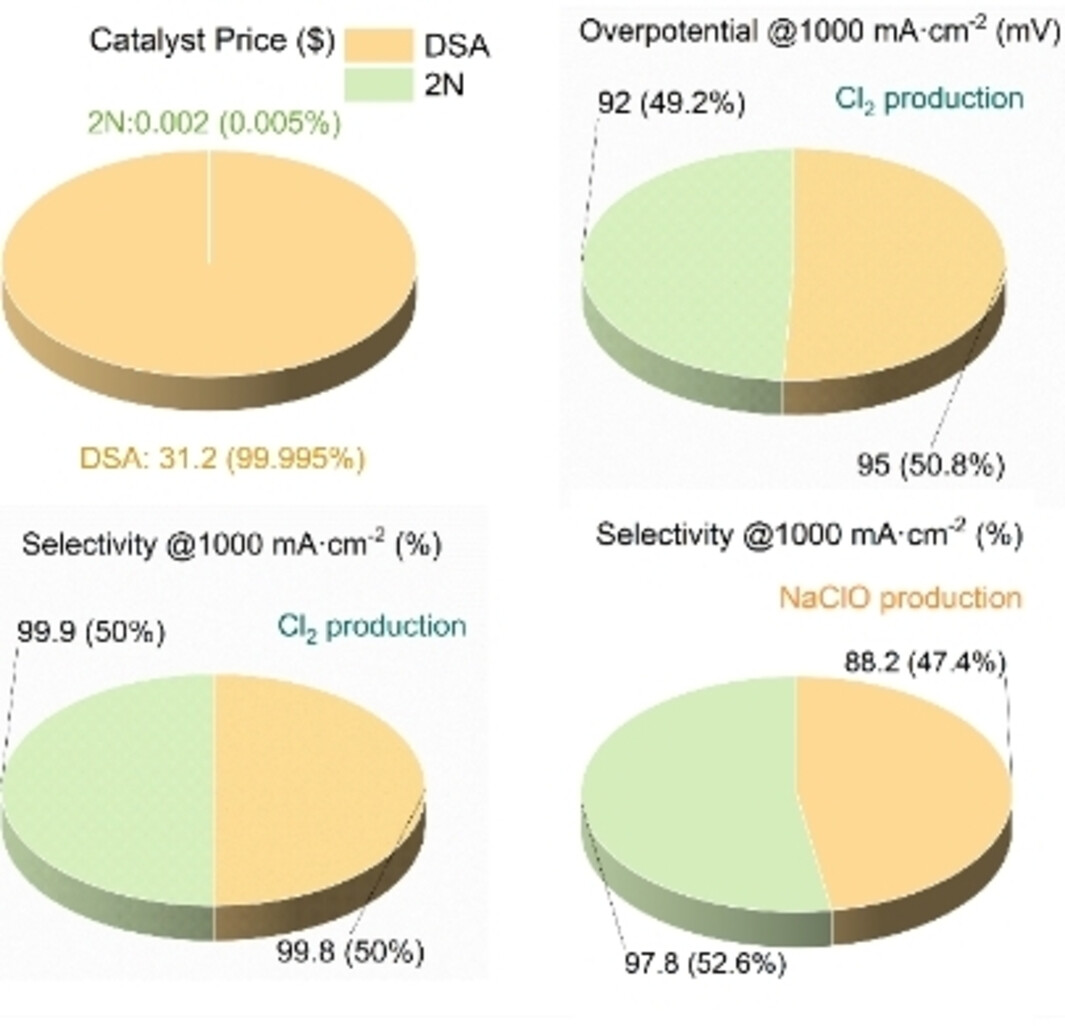
Organocatalyst has been applied in the field of electrochemistry. However, the large-scale production of the catalyst is hard to realize and the catalytic system nowadays is too complex to be applied in the practical production. This work first provides a highly efficient electro-organocatalyst for chloride ion oxidation both in acidic and neutral processes and cuts the cost down to 0.005 % compared with that of the dimensionally stable anode (DSA), providing an efficient choice for the chlor-related industry.
Responsive Chiral Foldamers
Switchable Dual Circularly Polarized Luminescence in Through-Space Conjugated Chiral Foldamers
- First Published: 02 May 2024
Uranium Chemistry | Hot Paper
Oxidative Addition of E−H (E=C, N) Bonds to Transient Uranium(II) Centers
- First Published: 07 May 2024
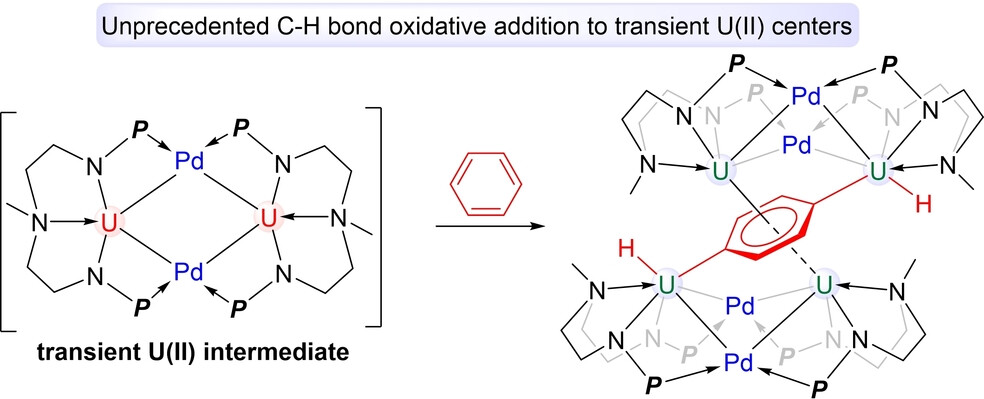
Examples of intermolecular oxidative addition involving C−H and N−H bonds to a transient U(II) center have been achieved. This study not only broadens the scope of two-electron oxidative additions for low-valent uranium centers from C−H to N−H bonds but also indicates that intermolecular two-electron oxidative additions are possible with actinide elements.
Osmotic Power
Interfacial Super-Assembly of Vacancy Engineered Ultrathin-Nanosheets Toward Nanochannels for Smart Ion Transport and Salinity Gradient Power Conversion
- First Published: 12 May 2024
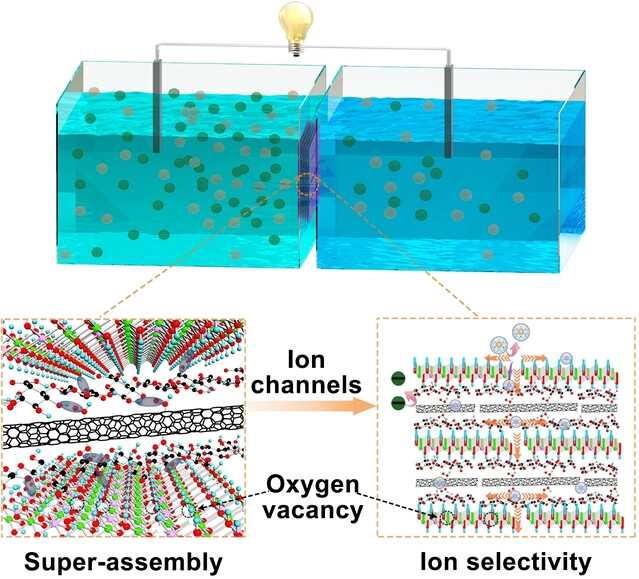
A vacancy-engineered layered double hydroxide/cellulose nanofibers wrapped carbon nanotubes (VOLDH/CNF-CNT) composite membrane was prepared by interfacial super-assembly. Synergistic combination of vacancy-engineering and super-assembly validates the membrane with improved surface charge density. Benefiting from the angstrom scale channels and abundant surface charge density, it exhibits size exclusion effect and charge selectivity.
Circularly Polarized Luminescence
Dynamic Near-Infrared Circularly Polarized Luminescence Encoded by Transient Supramolecular Chiral Assemblies
- First Published: 12 May 2024
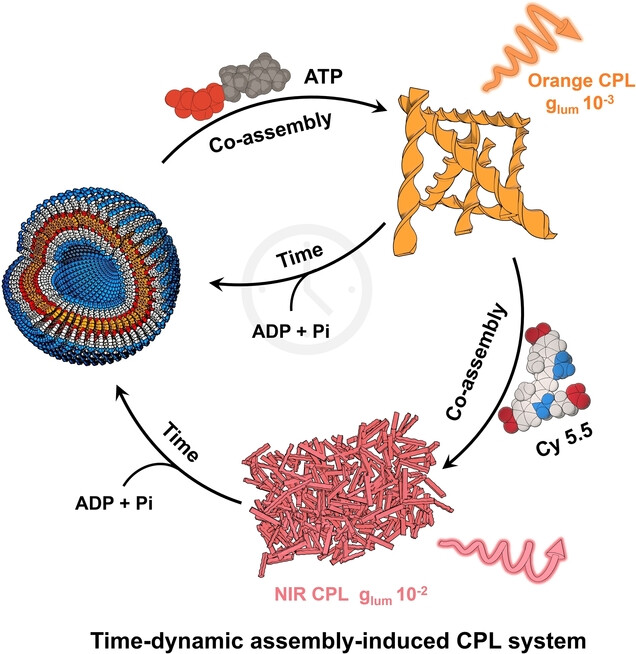
Adenosine triphosphate (ATP)-triggered transient supramolecular chiral assemblies that exhibit dynamic near-infrared (NIR) circularly polarized luminescence (CPL) with a high glum value of 2.5×10−2 were developed by coupling assembly-encoded emission to an enzyme-catalyzed reaction network. Exploiting the dynamic NIR CPL enabled multilevel advanced information encryption to be achieved.
CO2 Hydrogenation | Hot Paper
Designing Dual-Site Catalysts for Selectively Converting CO2 into Methanol
- First Published: 12 May 2024
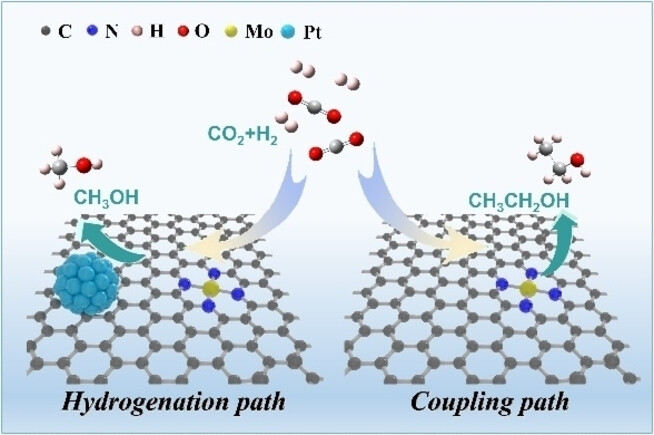
Following the theoretical predictions, a high-performance catalyst with oxophilic Mo single atoms and Pt nanoparticles was successfully synthesized. When applied in CO2 hydrogenation, the obtained dual-site catalyst induces selectively the generation of methanol in high rate (0.27 mmol gcat.−1 h−1). The synergistic effect of Pt nanoparticles and Mo single atoms efficiently change the adsorption configuration and conversion pathway of the key intermediate *OCH2.
Alkaline H2 Oxidation
Unraveling Stoichiometry Effect in Nickel-Tungsten Alloys for Efficient Hydrogen Oxidation Catalysis in Alkaline Electrolytes
- First Published: 12 May 2024

Alloying nickel with tungsten can tailor the catalytic surface to favor hydroxyl adsorption, tuning the connectivity of hydrogen-bond networks. Accordingly, the optimal Ni17W3 alloy exhibits hydrogen oxidation catalytic activity superior to the state-of-the-art platinum catalyst in alkali and operates steadily with negligible decay after 10,000 cycles.
Battery Cathode
Scalable Precise Nanofilm Coating and Gradient Al Doping Enable Stable Battery Cycling of LiCoO2 at 4.7 V
- First Published: 13 May 2024
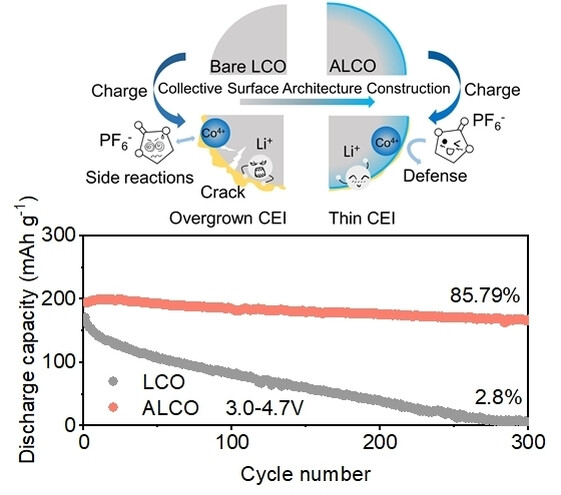
The overgrowth of surface CEI and the irreversible phase transition from H1–3 to O1 are the primary causes of LiCoO2 cathode degradation at 4.7 V. These phenomena can be significantly suppressed by employing an ultrathin, dense LiAlO2 surface coating and Al gradient doping, which enables a stable cycling of LiCoO2 at 4.7 V.
Catenanes
Highly Efficient Self-Assembly of Heterometallic [2]Catenanes and Cyclic Bis[2]catenanes via Orthogonal Metal-Coordination Interactions
- First Published: 13 May 2024
![Highly Efficient Self-Assembly of Heterometallic [2]Catenanes and Cyclic Bis[2]catenanes via Orthogonal Metal-Coordination Interactions](/cms/asset/b81392c1-65d4-4fa6-881b-66c7474437b6/anie202407923-toc-0001-m.jpg)
A series of heterometallic [2]catenanes and cyclic bis[2]catenanes were prepared efficiently via orthogonal metal-coordination-driven self-assembly. Owing to the multiple positively charged nature, as well as the potential synergistic effect of the Cu(I) and Pt(II) metal ions, the cyclic bis[2]catenanes displayed broad-spectrum antibacterial activity.
Supramolecular Chirality
Multiple-State Control over Supramolecular Chirality through Dynamic Chemistry Mediated Molecular Engineering
- First Published: 17 May 2024

The N-protected fluorinated amino acid was employed as the major building unit to manipulate chirality in multiple-state switchable states. It flexibly employs constitutional dynamic chemistry including covalent and noncovalent manner to allow five-state control over supramolecular chirality, shedding light on the rational design of responsive materials as well chiroptical switch.
Pervoskite LEDs
Controlling Tin Halide Perovskite Oxidation Dynamics in Solution for Perovskite Optoelectronic Devices
- First Published: 14 May 2024
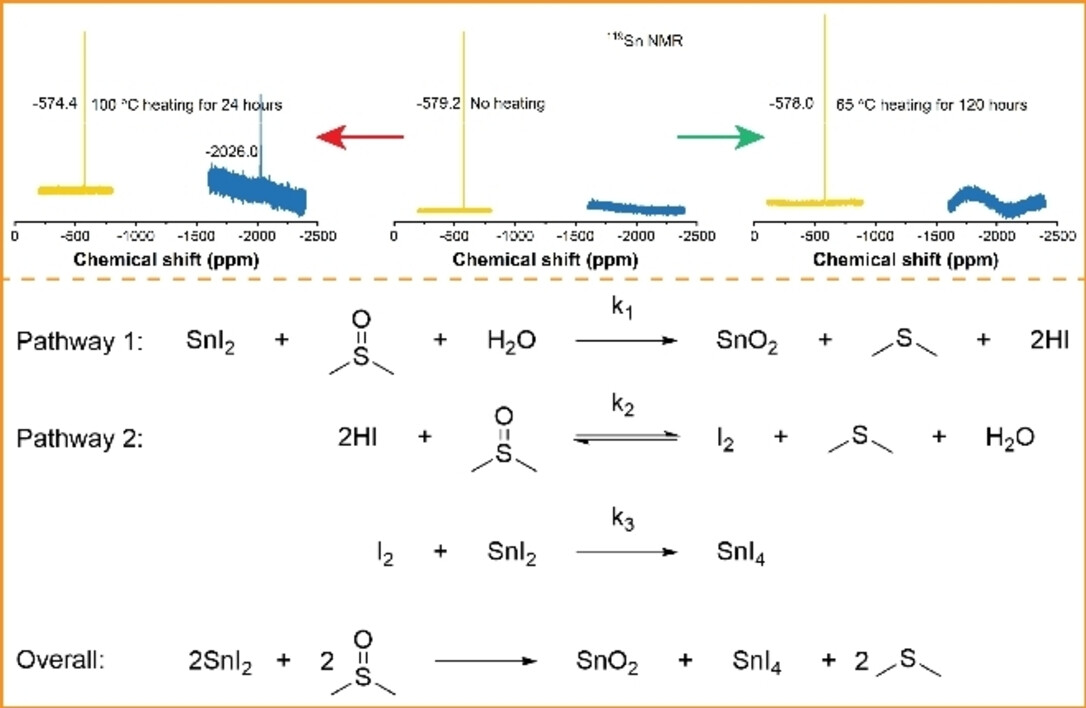
Tin-based perovskites hold promise for solar cell and LED applications, but suffer from inherent oxidation issues with the ubiquitous DMSO solvent. NMR spectroscopy reveals SnI2 oxidation kinetics, suggesting water involvement and HI generation. Processing at 60 °C suppresses the Sn oxidation, improving film quality and PeLEDs. This low-temperature protocol promises oxidation-free Sn perovskites, shaping future device fabrication.
Organostibine Synthesis | Very Important Paper
Facile Access to Organostibines via Selective Organic Superbase Catalyzed Antimony-Carbon Protonolysis
- First Published: 19 May 2024
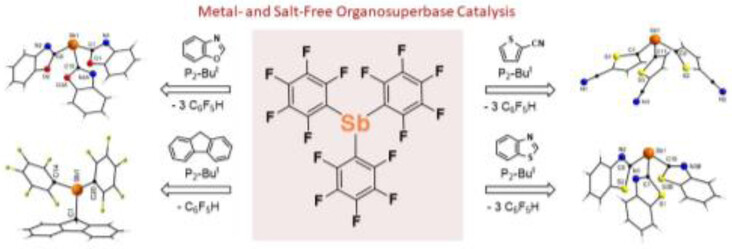
C6F5, the perfect leaving group for highly selective antimony-carbon bond formation reactions via organosuperbase-catalysis! This novel approach enables mono-, di- and tri-substituted perfluorophenyl stibines to be smoothly converted to a range of synthetically useful aromatic, heteroaromatic and alkynyl-substituted stibines under metal- and salt-free conditions.
Perovskite Solar Cells
Influence of Donor Skeleton on Intramolecular Electron Transfer Amount for Efficient Perovskite Solar Cells
- First Published: 15 May 2024
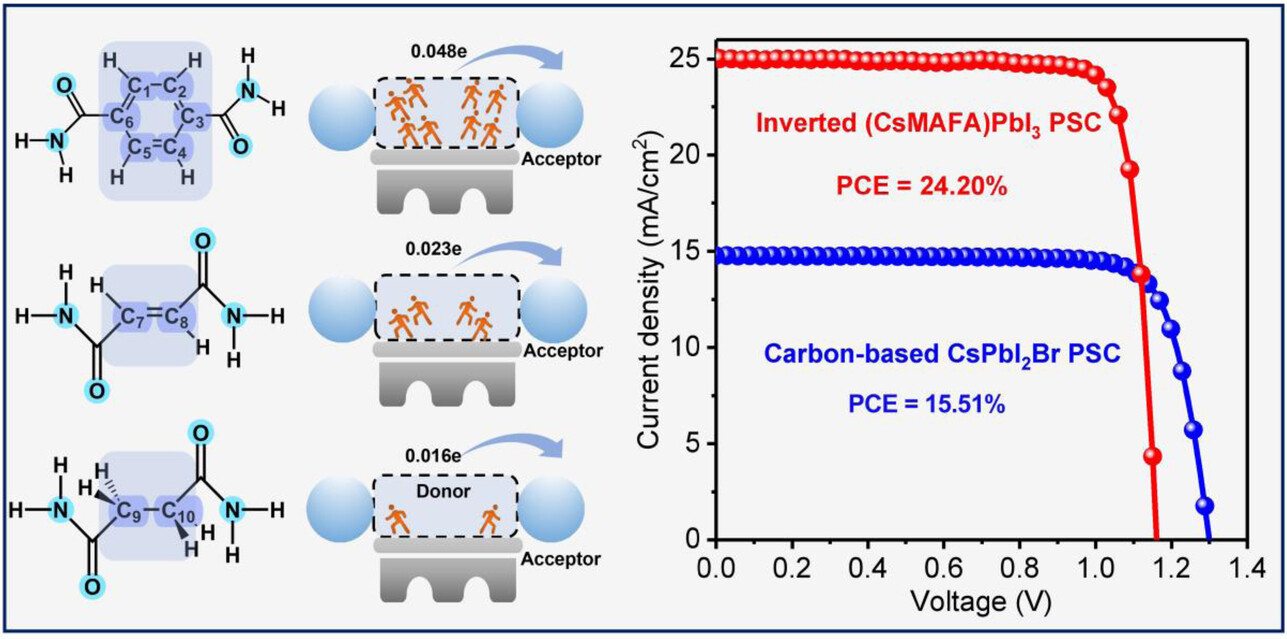
We multidimensionally reveal the relationship between passivation strength of organic passivator on perovskite film and the spin-state electronic structure of intermediate donor skeleton. Agreeing well with the calculated amounts of transferred electron between D−A pairs, the best benzene-amide pair delivers a champion efficiency of 15.51 % for carbon-based, all-inorganic CsPbI2Br solar cell and 24.20 % in an inverted (Cs0.05MA0.05FA0.9)Pb(I0.93Br0.07)3 cell.
Photocatalysis
Symmetry-breaking of Dibenzo[b,d]thiophene Sulfone Enhancing Polaron Generation for Boosted Photocatalytic Hydrogen Evolution
- First Published: 16 May 2024
![Symmetry-breaking of Dibenzo[b,d]thiophene Sulfone Enhancing Polaron Generation for Boosted Photocatalytic Hydrogen Evolution](/cms/asset/216db2c8-d6cb-4fb8-8e1c-400033a3e28b/anie202407702-toc-0001-m.jpg)
This study presents BBTT-1SO, a novel acceptor unit designed by breaking the symmetry of dibenzo[b,d]thiophene sulfone (DBS). Its asymmetric structure enhances octapole moment and polarizability compared to DBS-containing counterparts. Transient spectroscopy demonstrates efficient generation of electron polarons in BBTT-1SO polymers, contributing to their superior hydrogen evolution rate compared to DBS-containing polymers.
Noncovalent Interactions | Hot Paper
Lone-Pair-π Bond Strength Unveiled by a Combined Experimental and Computational Study
- First Published: 15 May 2024
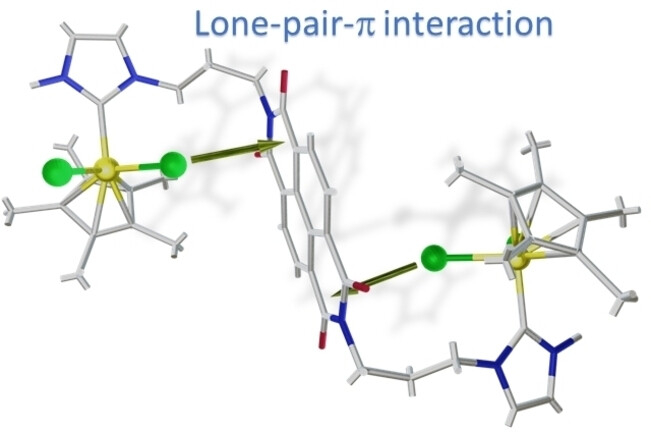
A series of bis-N-heterocyclic carbene complexes of iridium(III) connected by naphthalene-diimide (NDI) and perylene-diimide (PDI) units have been prepared to determine the nature and strength of the (Cl)lone-pair-π interactions between the chloride ligands and the heterocycles of the NDI/PDI moieties. Analysis of this interaction revealed that its enthalpy lies in the 6–9 kcal/mol range.
Heterogeneous Catalysis
Constructing High-Performance Cobalt-Based Environmental Catalysts from Spent Lithium-Ion Batteries: Unveiling Overlooked Roles of Copper and Aluminum from Current Collectors
- First Published: 15 May 2024
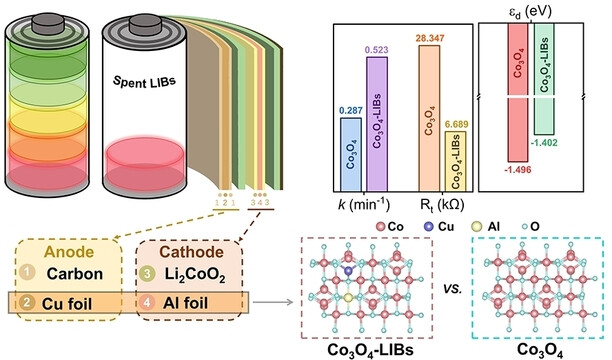
The role of trace metals from current collectors on the activity of environmental catalysts converted from spent LIBs was revealed by a Fenton-like reaction. Al and Cu from current collectors could tune the d-band centre of active sites, leading to improved conductivity and strengthened chemisorption ability toward reactants, thereby enhancing the catalytic activity of environmental catalysts converted from spent LIBs.
Gold Nanoclusters | Hot Paper
Concomitant Near-Infrared Photothermy and Photoluminescence of Rod-Shaped Au52(PET)32 and Au66(PET)38 Synthesized Concurrently
- First Published: 16 May 2024
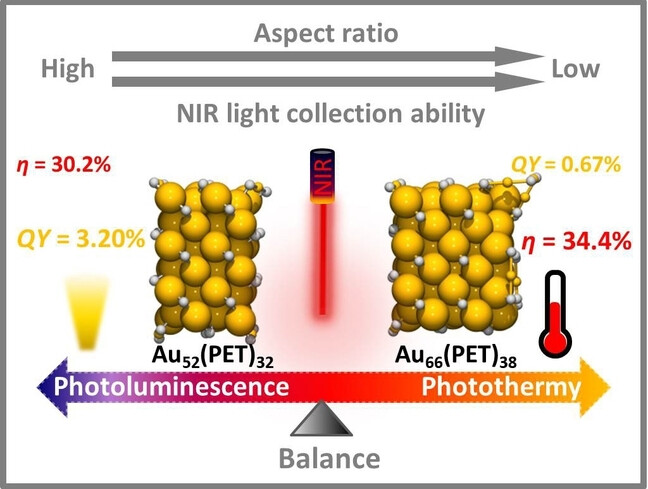
Two rod-shaped Au52(PET)32-G and Au66(PET)38 are synthesized and precisely characterized. Basing on the unreported transverse growth mode from Au52(PET)32-G to Au66(PET)38, six novel nanoclusters are predicted. Although the two nanoclusters have different aspect ratios and near-infrared (NIR) light collection abilities, they have concomitant photothermy (PT) and photoluminescence (PL) under NIR irradiation, and the PT and PL are in balance.
Photochemistry
Engineering Ultrathin CuxS Layer on Planar Sb2S3 Photocathode to Enhance Photoelectrochemical Transformation
- First Published: 16 May 2024

As a back contact for Sb2S3, an ultrathin CuxS layer has been successfully engineered for the first time to fabricate a layer-by-layer Sb2S3/CuxS hole-transparent structure. With a substantial work function of 4.90 eV for CuxS layer, the transparent Sb2S3/CuxS platform enabled flexible integration of intricate catalyst layers at the electrode-electrolyte interface for efficient photoelectrochemical transformation.
Aqueous Zinc-Ion Batteries
Suppressed Dissolution of Fluorine-Rich SEI Enables Highly Reversible Zinc Metal Anode for Stable Aqueous Zinc-Ion Batteries
- First Published: 21 May 2024
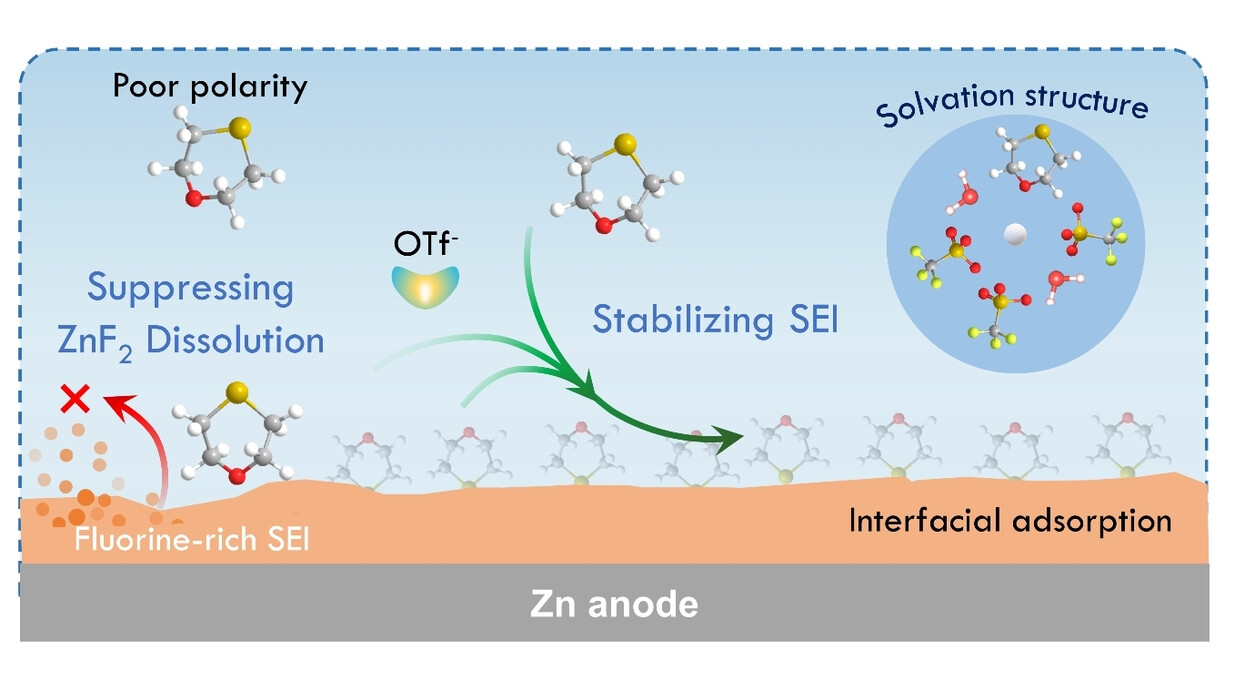
Fluorine-rich SEI dissolution is a major cause of zinc anode failure. The SEI content fluctuates significantly during the plating/stripping process, resulting in an unstable electrode/electrolyte interface. A versatile functional electrolyte additive, thioether-TX was introduced to reduce solvent polarity, as a poor solvent molecule for F−. Additionally, TX could modulate the Zn2+ solvation structure and adsorb at the electrode/electrolyte interface to reduce the activity of local water, further suppressing the dissolution of ZnF2 and stabilizing the fluorine-rich SEI layer.
Perovskites | Very Important Paper
Controlling the Orientation-Dependent Second Harmonic Generation in Hybrid Germanium Perovskites
- First Published: 21 May 2024

Facet engineering is an effective approach to enhance second harmonic generation (SHG) efficiency. Here, we demonstrate the larger polarization from the higher in-plane polar units [GeI3]− density within the (101) MAGeI3, results in the stronger SHG in the (101)-oriented than the (210)-oriented methylammonium germanium iodide crystals.
CO2 Reduction
Modulating the D-π-A Interactions in Metal-Covalent Organic Frameworks for Efficient Electroreduction of CO2 into Formate
- First Published: 22 May 2024
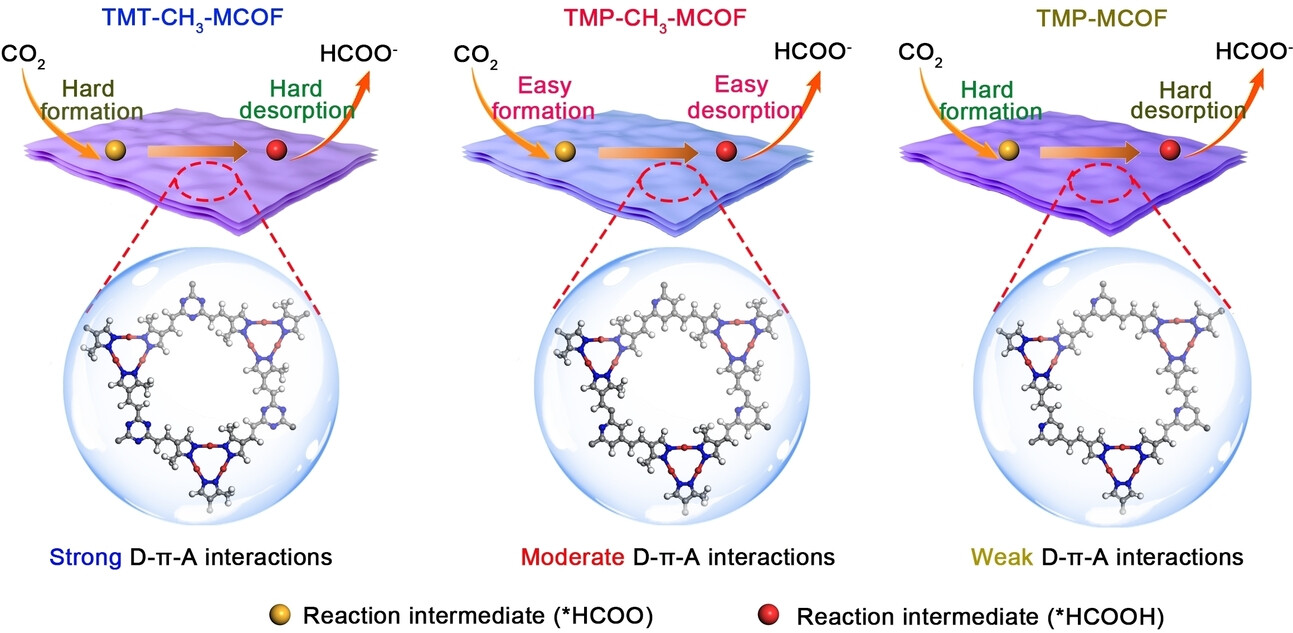
Vinylene-linked MCOFs with continuously tunable D-π-A interactions by adjusting the structure of the monomer at the molecular level are synthesized for the first time. Benefiting from the unique moderate D-π-A interactions with suitable binding ability of intermediate, the obtained TMP-CH3-MCOF exhibits remarkable electrocatalytic performance for CO2 to formate.
Organometallic Chemistry | Hot Paper
Synthesis, Isolation, and Reactivity Studies of ‘Naked’ Acyclic Gallyl and Indyl Anions
- First Published: 22 May 2024

A tale of a ‘naked’ acyclic gallyl and indyl compounds: By exploiting the electronic prowess of N-heterocyclic boryloxy (NHBO) groups, ′naked′ acyclic gallyl and indyl anions from [KGa{OB(NDippCH)2}2] and [KIn{OB(NDippCH)2}2] were obtained by K+ extraction, thereby resulting in the first O-ligated gallyl/indyl systems. The nucleophilicity of these trielyl species can be tuned by the presence of the K+ counterion.
Solar Cells | Very Important Paper
Multifunctional Buffer Layer Engineering for Efficient and Stable Wide-Bandgap Perovskite and Perovskite/Silicon Tandem Solar Cells
- First Published: 22 May 2024

A facile strategy incorporating AlOx deposited by controlled growth was developed to modulate the perovskite surface. The infiltrated Al3+ can suppress ion migration and phase separation, regulate the arrangement of energy levels, and passivate defects on the perovskite surface and grain boundaries. A monolithic perovskite-silicon tandem solar cell achieved a PCE of 28.50 % with excellent photothermal stability.
Lead-Chelating Intermediate for Air-Processed Phase-Pure FAPbI3 Perovskite Solar Cells
- First Published: 24 May 2024
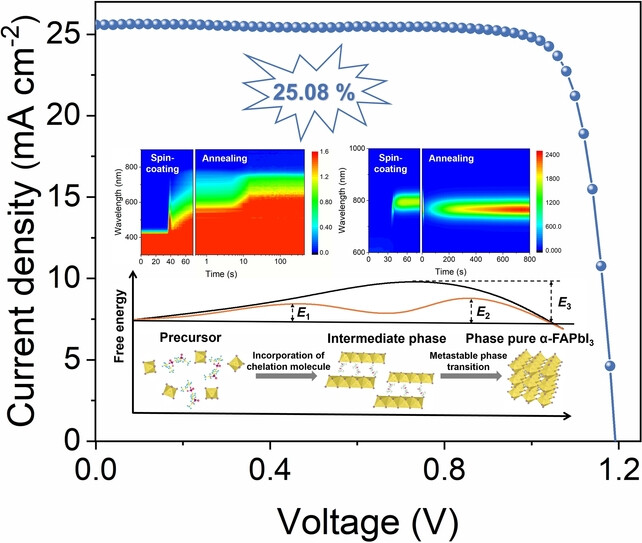
We demonstrate that the lead-chelating intermediate phase promotes the formation of α-FAPbI3 at ambient air, bypassing the formation of δ-FAPbI3. The crystallinity of perovskites and the α-phase stability are remarkably improved. Consequently, the ambient-fabricated FAPbI3 perovskite solar cells exhibit an outstanding power conversion efficiency of 25.08 %, along with the high open-circuit voltage (1.19 V).
Thermally Activated Delayed Fluorescence
Tetraborated Intrinsically Axial Chiral Multi-resonance Thermally Activated Delayed Fluorescence Materials
- First Published: 23 May 2024

By using conjugation-extended bidibenzo[b,d]furan/bidibenzo[b,d]thiophene moieties, two pairs of tetraborated chiral multi-resonance thermally activated delayed fluorescence enantiomers have been synthesized that show good photophysical and chiroptical properties. The sulfur atoms accelerate the reverse intersystem crossing process. The circularly polarized organic light-emitting diodes exhibit an external quantum efficiency of 30.1 % with dissymmetry factors of 0.59/1.2×10−3.
Copper Catalysis | Hot Paper
Copper-Catalyzed Dearomative 1,2-Hydroamination
- First Published: 23 May 2024
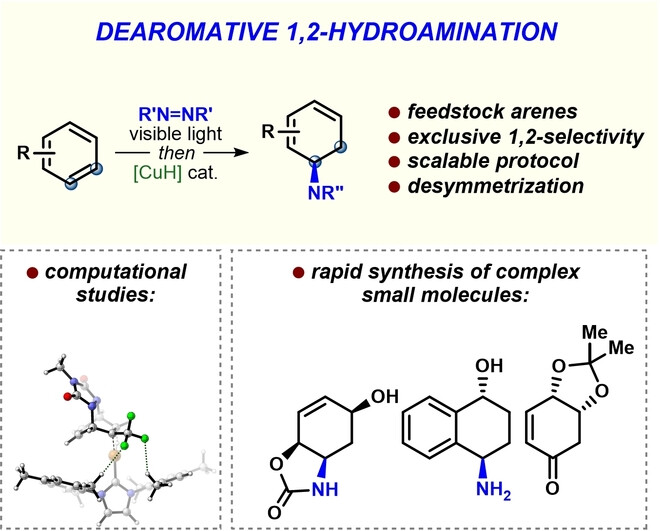
Harnessing an arenophile-mediated photocycloaddition and copper hydride catalysis, we report a formal dearomative hydroamination of nonactivated feedstock arenes, including benzene and naphthalene. A unique selectivity paradigm is rationalized using density functional theory (DFT) calculations, and a scalable desymmetrization is developed. This transformation enables efficient access to densely-functionalized small molecules with multiple stereocenters.
Electrocatalysis | Hot Paper
Scalable and Selective Electrochemical Hydrogenation of Polycyclic Arenes
- First Published: 21 June 2024
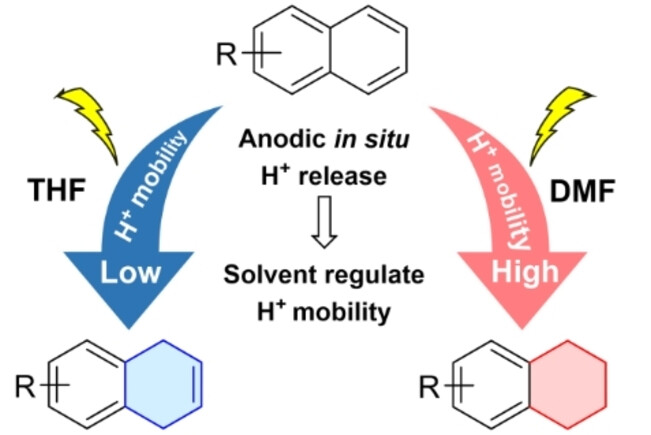
An electrochemical approach for the selective hydrogenation of aromatic hydrocarbons has been proposed. Detailed mechanistic studies indicate that the selectivity is attributed to combined effects of in situ released protons during anodic oxidation and significant differences in H+ mobility among various solvents.
Photocatalysis
Management of Triplet States in Modified Mononuclear Ruthenium(II) Complexes for Enhanced Photocatalysis
- First Published: 23 May 2024

A new strategy to considerably prolong the triplet excited-state lifetime by decorating a Ru(II) phosphine complex (RuP-1) with pendent polyaromatic hydrocarbons to transition their excited state from 3MLCT to 3IL, is presented. RuP-4 catalyzes CO2 photoreduction to CO with unprecedented performance without additional photosensitizers.
Steric Parameters | Hot Paper
Reactivity and Steric Parameters from 2D to 3D Bulky Pyridines: Increasing Steric Demand at Nitrogen with Chiral Azatriptycenes
- First Published: 23 May 2024
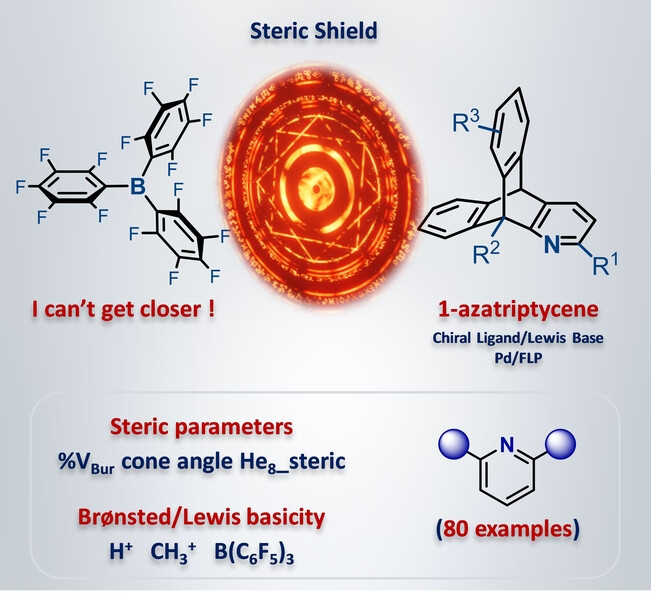
Highly sterically hindered chiral pyridines were synthesized and resolved by HPLC. Their Brønsted/Lewis basicity were evaluated, and their reactivity was studied through their combination with Pd and B(C6F5)3 to generate new types of ligands/frustrated Lewis pairs. The study involved the first parameterization of the steric hindrance for a large set of pyridine derivatives.
Mechanistic Investigations | Hot Paper
Time-Resolved Mechanistic Depiction of Photoinduced CO2 Reduction Catalysis on a Urea-Modified Iron Porphyrin
- First Published: 23 May 2024
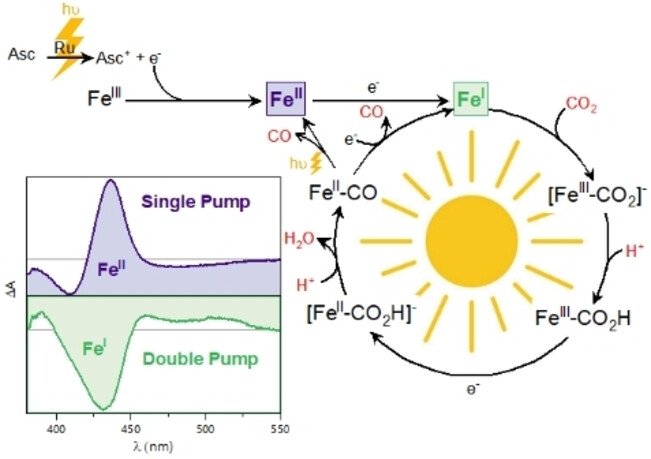
A pump-pump excitation strategy induces effective accumulation of charge on an FeIII-based urea-modified porphyrin as the fates of the photogenerated species are tracked through their optical transient absorption signatures. In the presence of CO2 as a substrate and H2O as a proton source, the two-electron accumulated species leads to CO2 activation and reduction, generating FeII-CO as a stable intermediate in the reaction mechanism.
Metal-Air Batteries | Very Important Paper
A Highly Reversible Sn-Air Battery Possessing the Ultra-Low Charging Potential with the Assistance of Light
- First Published: 25 May 2024
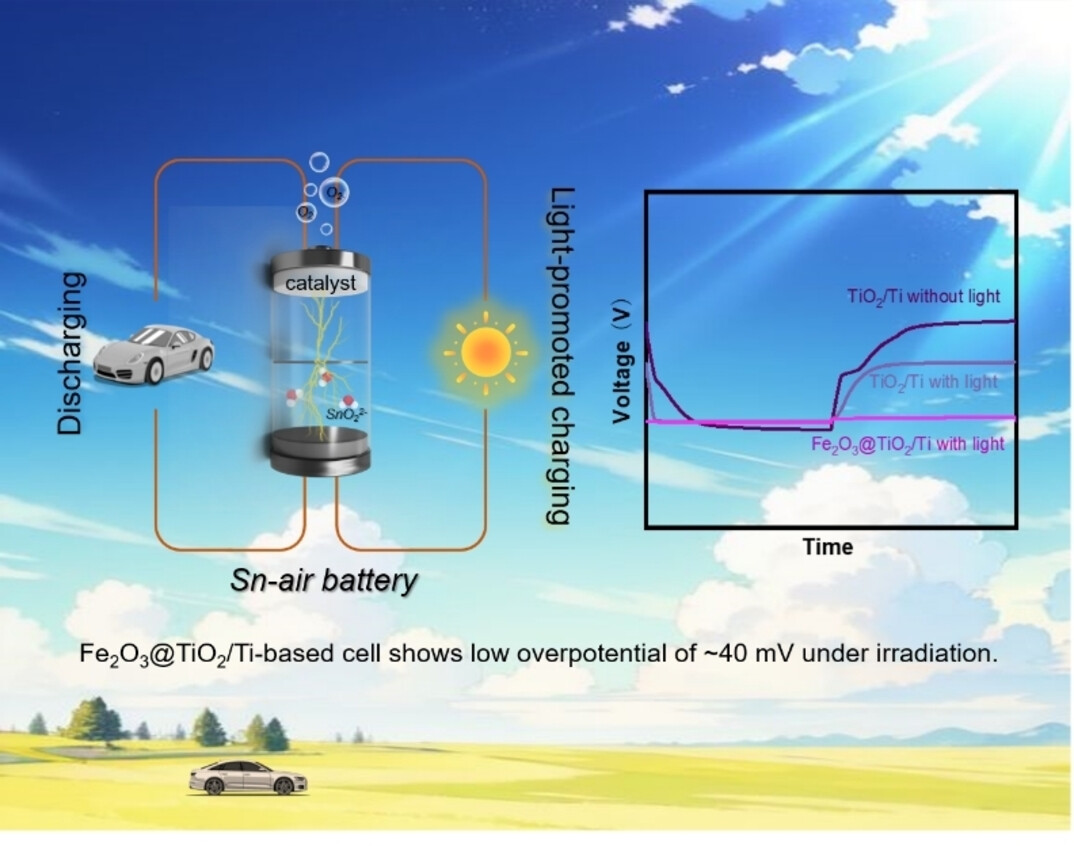
A rechargeable Sn-air battery using Fe2O3@TiO2/Ti multi-functional catalytic cathode is proposed for the first time. Due to the heterogeneous Fe2O3@TiO2-induced high photo-/electro-catalytic performances, the corresponding Sn-air battery has achieved the ultra-low charge/discharge overpotential of ~40 mV and stably cycled for 160 hours under irradiation.
COFs for H2O2 Synthesis | Hot Paper
Protonation of an Imine-linked Covalent Organic Framework for Efficient H2O2 Photosynthesis under Visible Light up to 700 nm
- First Published: 13 May 2024
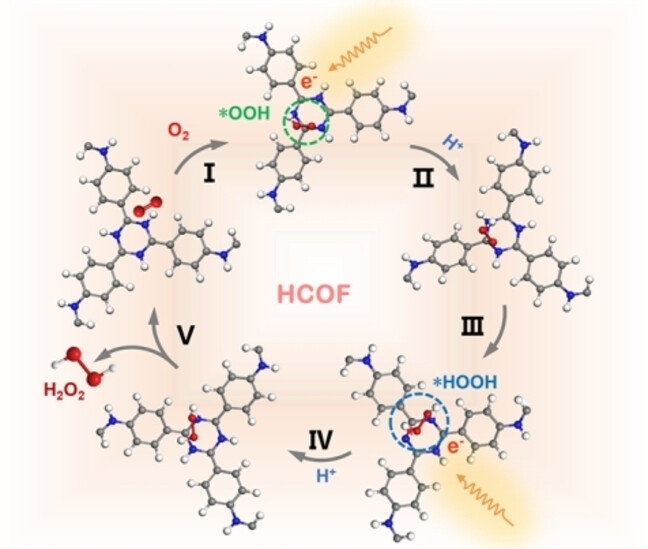
Protonation is found to be a simple and efficient strategy to upgrade the COFs’ photocatalytic activity for H2O2 synthesis. The protonation extends the light absorption, provides proton sources for H2O2 generation, simplifies the reaction pathways, and increases the H2O2 selectivity from oxygen reduction reaction.
Nitrate Reduction | Hot Paper
Modulating the Electrolyte Microenvironment in Electrical Double Layer for Boosting Electrocatalytic Nitrate Reduction to Ammonia
- First Published: 28 May 2024
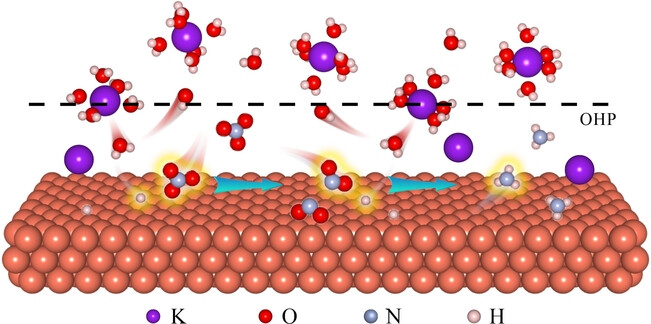
An effective strategy by mediating alkali metal cations in electrical double layer is proposed to enhance the nitrate reduction reaction performance. The activity, Faraday efficiency, selectivity, and yield of ammonia synthesis follow the increasing order Li+<Cs+<Na+<K+, originating from the accelerated proton transport rate and improved activity of the rate-determining step (NO3− to NO2−) in K+-containing electrolyte.
Electrochemical CO2 Reduction
pH-Universal Electrocatalytic CO2 Reduction with Ampere-Level Current Density on Doping-Engineered Bismuth Sulfide
- First Published: 27 May 2024

The S-doped metallic Bi catalyst was formed by the electrochemical reconstruction of Bi2S3, which delivers outstanding performance in converting CO2 to formate/formic acid across a range of pH conditions. The simultaneous production of formate on both cathode and anode was also achieved by coupling CO2 reduction reaction with glycerol oxidation reaction.
Cross-Coupling
A Rationally Designed Iron(II) Catalyst for C(sp3)−C(sp2) and C(sp3)−C(sp3) Suzuki–Miyaura Cross-Coupling
- First Published: 22 May 2024

A well-defined iron catalyst with high efficiency for Suzuki–Miyaura coupling involving C(sp3) partners is described. In the presence of a lithium amide base, this catalyst enabled, for the first time, C(sp3)−C(sp2) coupling of 1°, 2°, and 3° alkyl halides and (hetero)aryl boronic esters as well as C(sp3)−C(sp3) coupling of 1° and 2° alkyl halides and 1° and 2° alkyl boranes under mild conditions and with broad functional group tolerance.
Formic Acid Electrooxidation | Hot Paper
Ultra-Large Two-Dimensional Metal Nanowire Networks by Microfluidic Laminar Flow Synthesis for Formic Acid Electrooxidation
- First Published: 26 May 2024
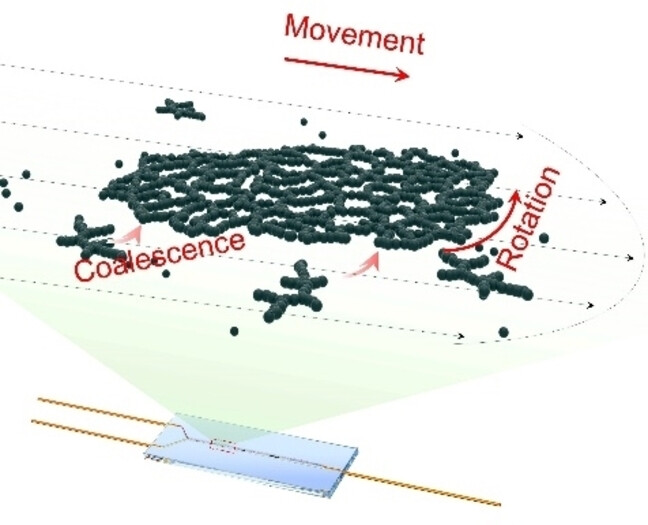
Efficient synthesis of 2D MNWNs in microfluidic systems through precise control of growth kinetics via spatial confinement and shear-induced phenomena. A novel approach for the direct synthesis of ultra-large two-dimensional metal nanowire networks (2D MNWNs) catalysts was developed based on spatial confinement assembly and laminar shear effect. The PdBi 2D MNWNs affords the exceptional activity and stability for formic acid electrooxidation. The present study expands the potential applications in nanomaterial production through microfluidics.
Communication
Photocatalysis
Photocatalytic Decarboxylative Functionalization of Cyclopropenes via Cyclopropenium Cation Intermediates
- First Published: 27 May 2024

We report a photocatalytic decarboxylative functionalization of cyclopropenes. Starting from cyclopropenyl redox-active esters, easily accessible through the rhodium- or silver-catalyzed cyclopropenation of alkynes, we could access a wide range of diverse cyclopropenes under mild photoredox conditions. The transformation displayed a broad scope and a remarkable functional group tolerance. Mechanistic studies supported aromatic cyclopropenium cations as reaction intermediates.
Iron Catalysis
Iron-Catalyzed C−H Alkylation/Ring Opening with Vinylbenzofurans Enabled by Triazoles
- First Published: 24 May 2024
Phosphines
Dialumene-Mediated Production of Phosphines through P4 Reduction
- First Published: 19 May 2024
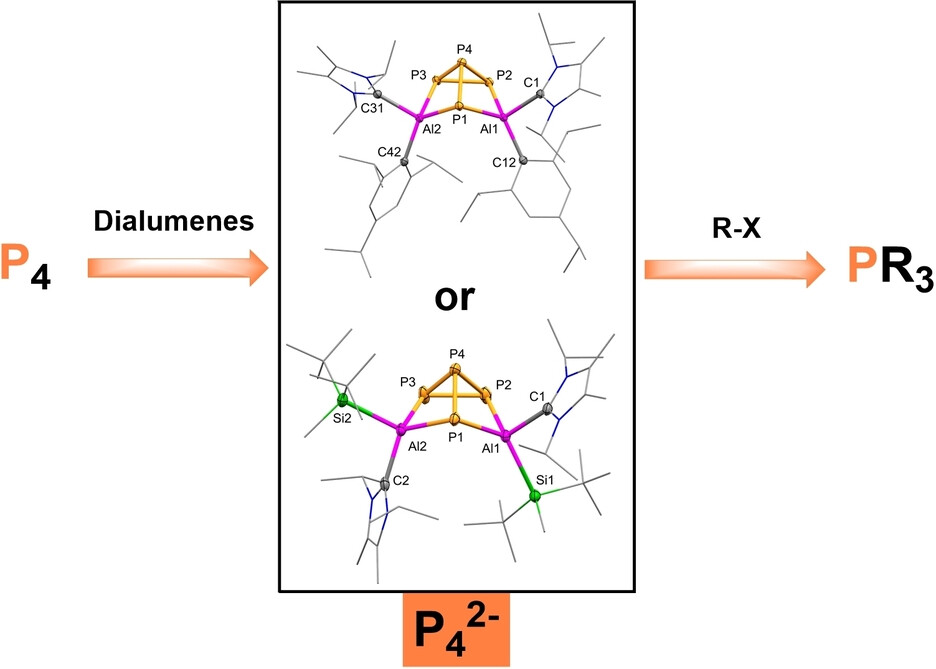
The formation of phosphorus-rich alanes featuring butterfly-like geometries is achieved. The two-electron reduction products feature a unique P42- structure and are able to be the source of P3-. It is that the treatment of different electrophiles to them under mild conditions resulted different phosphines, which avoids the requirements of high temperature and/or high pressure for the preparation of the useful phosphines in industry.
Zirconium Catalysis | Hot Paper
Photoinduced Low-Valent Zirconium Catalysis for Cross-Electrophile Coupling of Ethers
- First Published: 23 May 2024
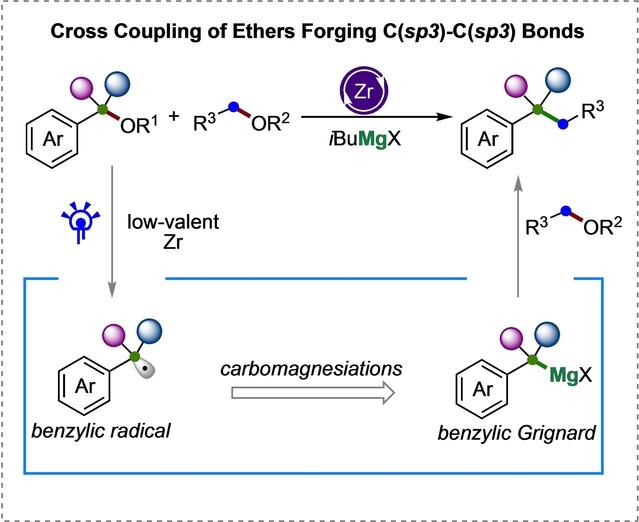
Photoinduced zirconocene catalysis was utilized to achieve the reductive coupling of ethers with remarkable activity and cross-selectivity. Mechanistic investigation revealed that photoexcitation of low-valent zirconocene facilitates the scission of benzylic C(sp3)−O bonds, resulting in benzylic radicals that recombine with Zr center. Subsequent carbomagnesiation generates benzylic Grignard reagents for downstream coupling with aliphatic ethers.
Photocatalysis | Very Important Paper
Synergy of Photogenerated Electrons and Holes toward Efficient Photocatalytic Urea Synthesis from CO2 and N2
- First Published: 02 June 2024
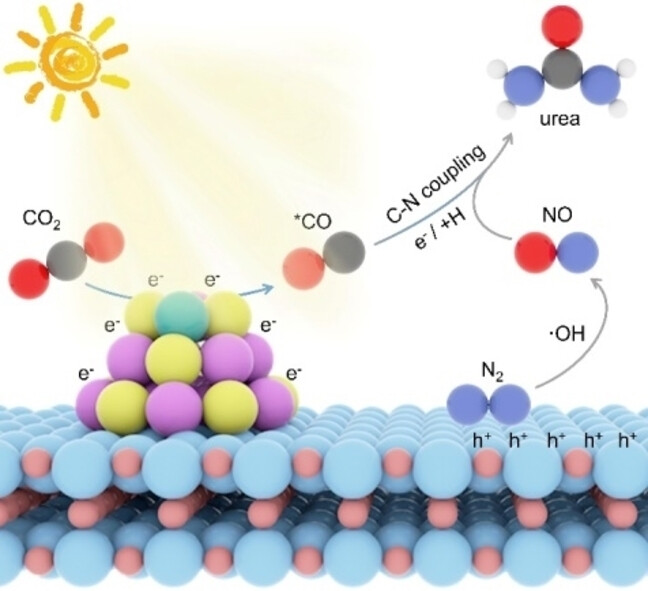
For a catalyst consisting of WO3 and Ni single-atom-decorated CdS, the N2 is converted into NO species by ⋅OH radicals generated from photogenerated holes, meanwhile the CO2 is transformed into *CO species by photogenerated electrons. The generated NO and *CO species are further coupled and gradually transformed into urea.
Cycloaddition Chemistry
Lewis Acid Catalyzed Cycloaddition of Bicyclobutanes with Ynamides for the Synthesis of Polysubstituted 2-Amino-bicyclo[2.1.1]hexenes
- First Published: 23 May 2024
![Lewis Acid Catalyzed Cycloaddition of Bicyclobutanes with Ynamides for the Synthesis of Polysubstituted 2-Amino-bicyclo[2.1.1]hexenes](/cms/asset/14e0491c-462e-4513-9715-ac36b9a3268b/anie202405781-toc-0001-m.jpg)
A Sc(OTf)3-catalyzed cycloaddition of bicyclo[1.1.0]butanes with ynamides was developed, enabling access to a variety of polysubstituted 2-amino-bicyclo[2.1.1]hexenes in good to excellent yields. The prepared products serve as valuable precursors for the synthesis of novel and functionally diverse bicyclo[1.1.0]butanes, showcasing their potential utility in other fields.
Main-Group Chemistry | Hot Paper
Trigonal Planar [PN3]4− Anion in the Nitridophosphate Oxide Ba3[PN3]O
- First Published: 23 May 2024
![Trigonal Planar [PN3]4− Anion in the Nitridophosphate Oxide Ba3[PN3]O](/cms/asset/5a36d7ba-fcd1-4383-a72a-26ac5da9c4eb/anie202405849-toc-0001-m.jpg)
We present Ba3[PN3]O, containing the first [PN3]4− anion. Starting from commercial availably starting materials, we successfully synthesized this compound by a medium pressure reaction using the hot isostatic press. The crystal structure was elucidated by combination of single-crystal X-ray diffraction, SEM-EDX, LCC and MAS NMR, whereby the unambiguous assignment of O/N was verified successfully.
Seawater Electrolysis
Electrocatalytic Acetylene Hydrogenation in Concentrated Seawater at Industrial Current Densities
- First Published: 20 May 2024
Oxygen Evolution
Inhibiting Dissolution of Active Sites in 80 °C Alkaline Water Electrolysis by Oxyanion Engineering
- First Published: 28 May 2024

Alkaline water electrolysers typically operate at 80 °C to minimize power consumption. But NiFe-based catalysts encounter the bottleneck of high solubility at such temperatures. In this work, we employed oxyanions as inhibitors in electrolytes. At industrial required 400 mA cm−2 and 80 °C, the oxyanion engineering inhibit the loss of NiFe-layered double hydroxides active sites to 1/3 of the original amount, thus reducing the degradation rate by 25-fold.




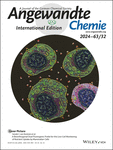

![Triply Interlocked [2]catenanes: Rational Synthesis, Reversible Conversion Studies and Unprecedented Application in Photothermal Responsive Elastomer](/cms/asset/b13f8bdb-feb9-459b-9757-1acd4b2242fd/anie202406552-toc-0001-m.jpg)
